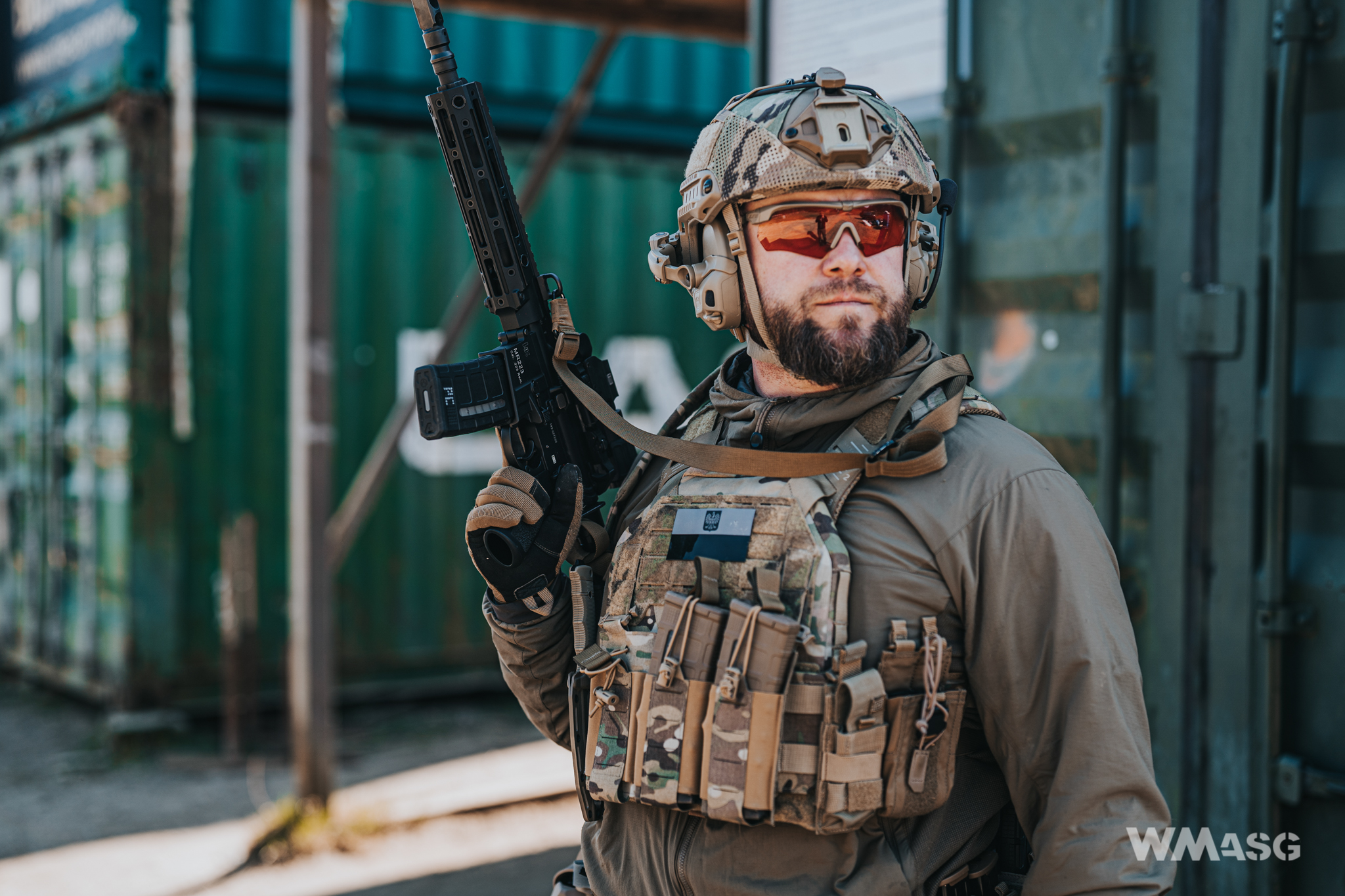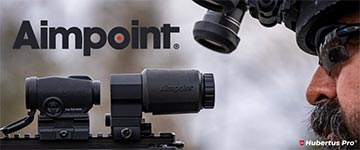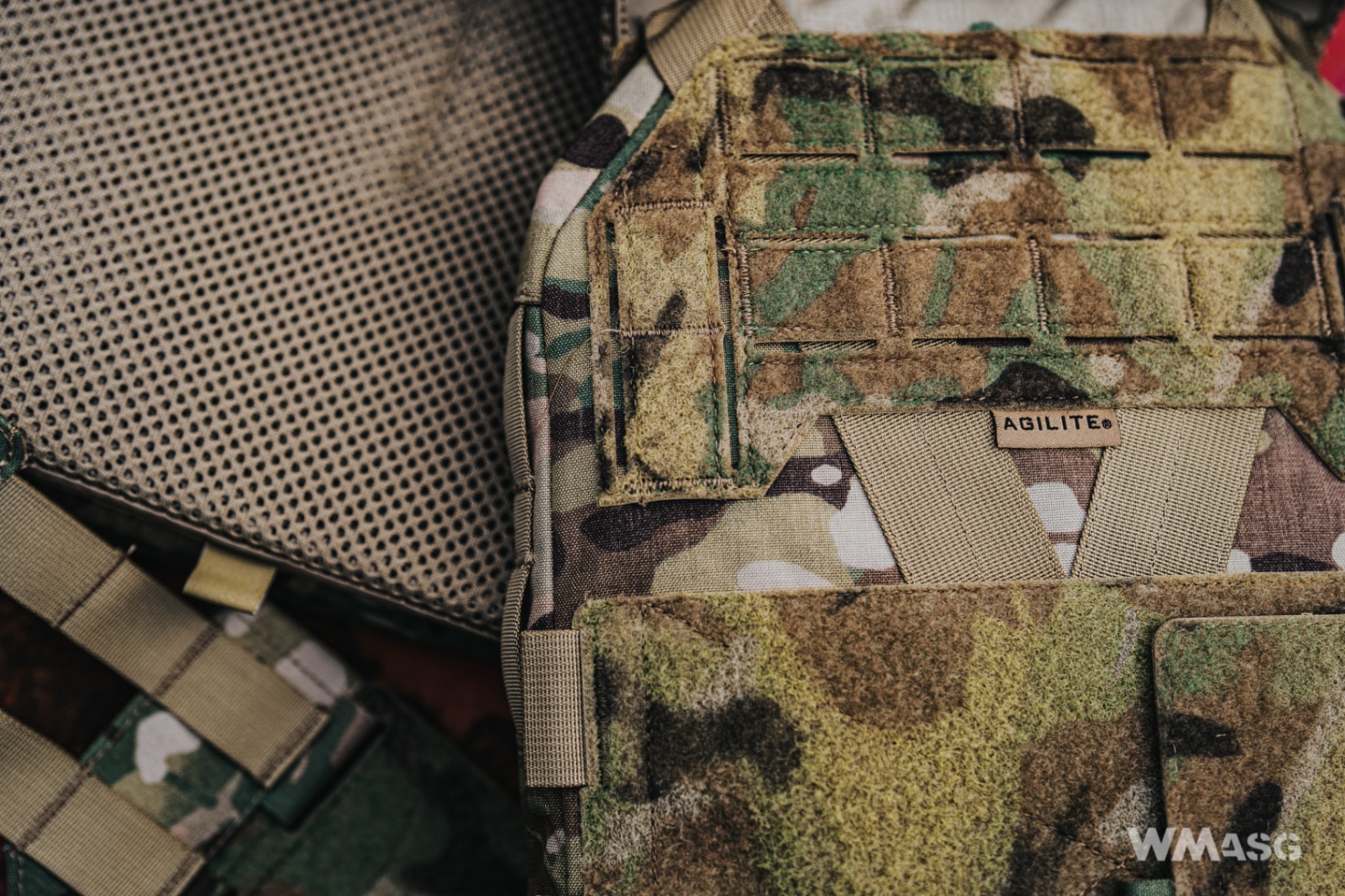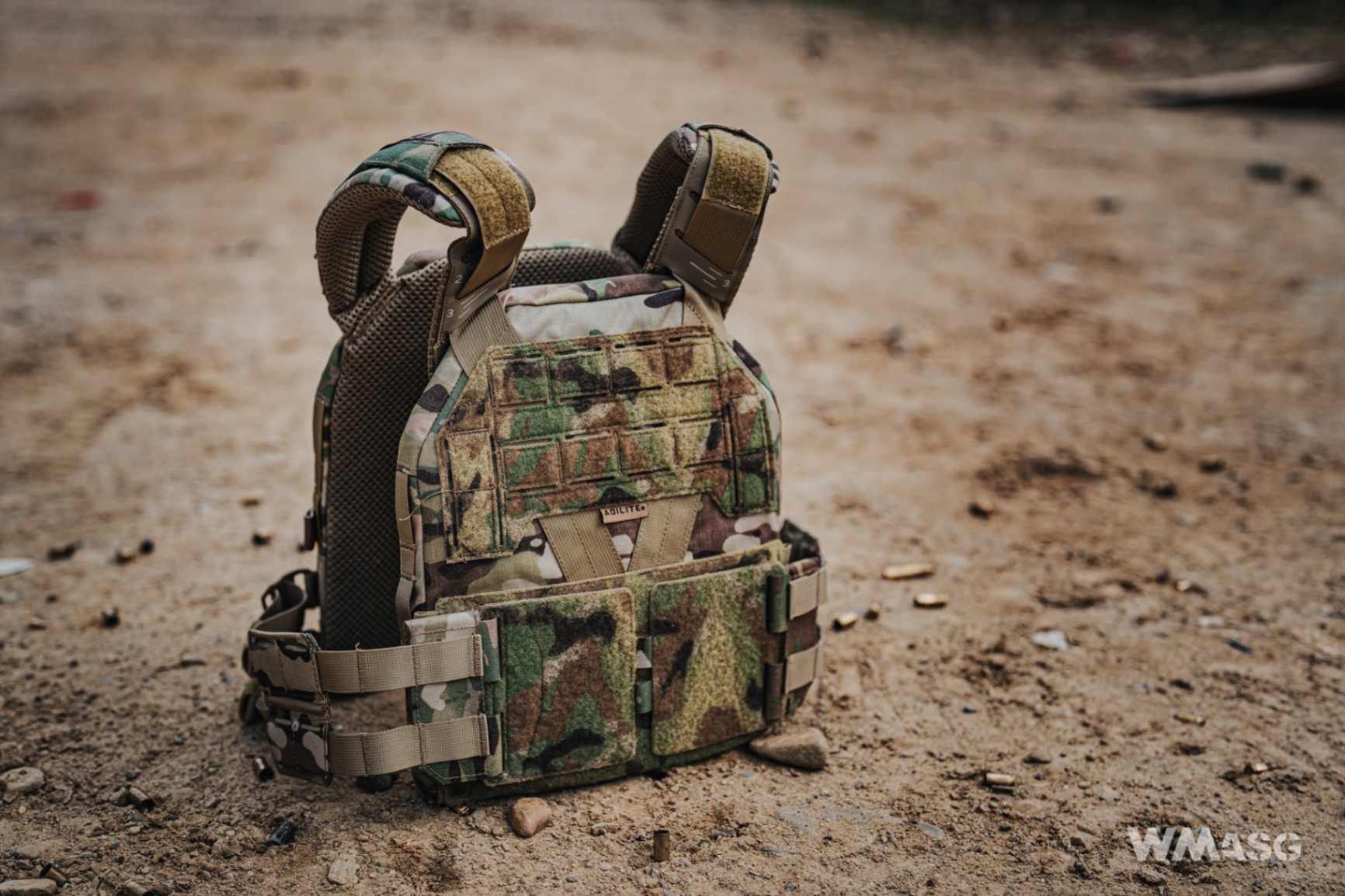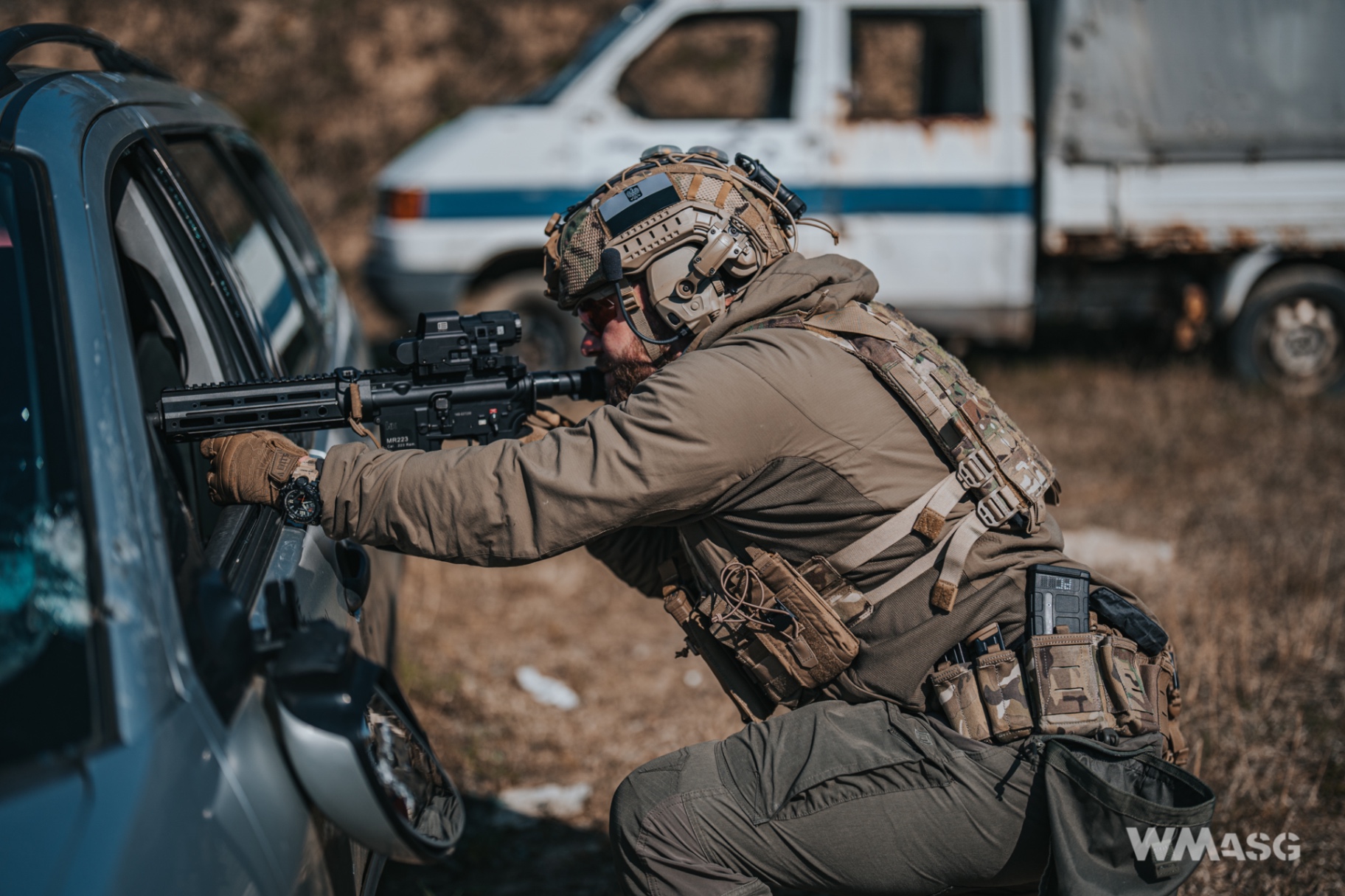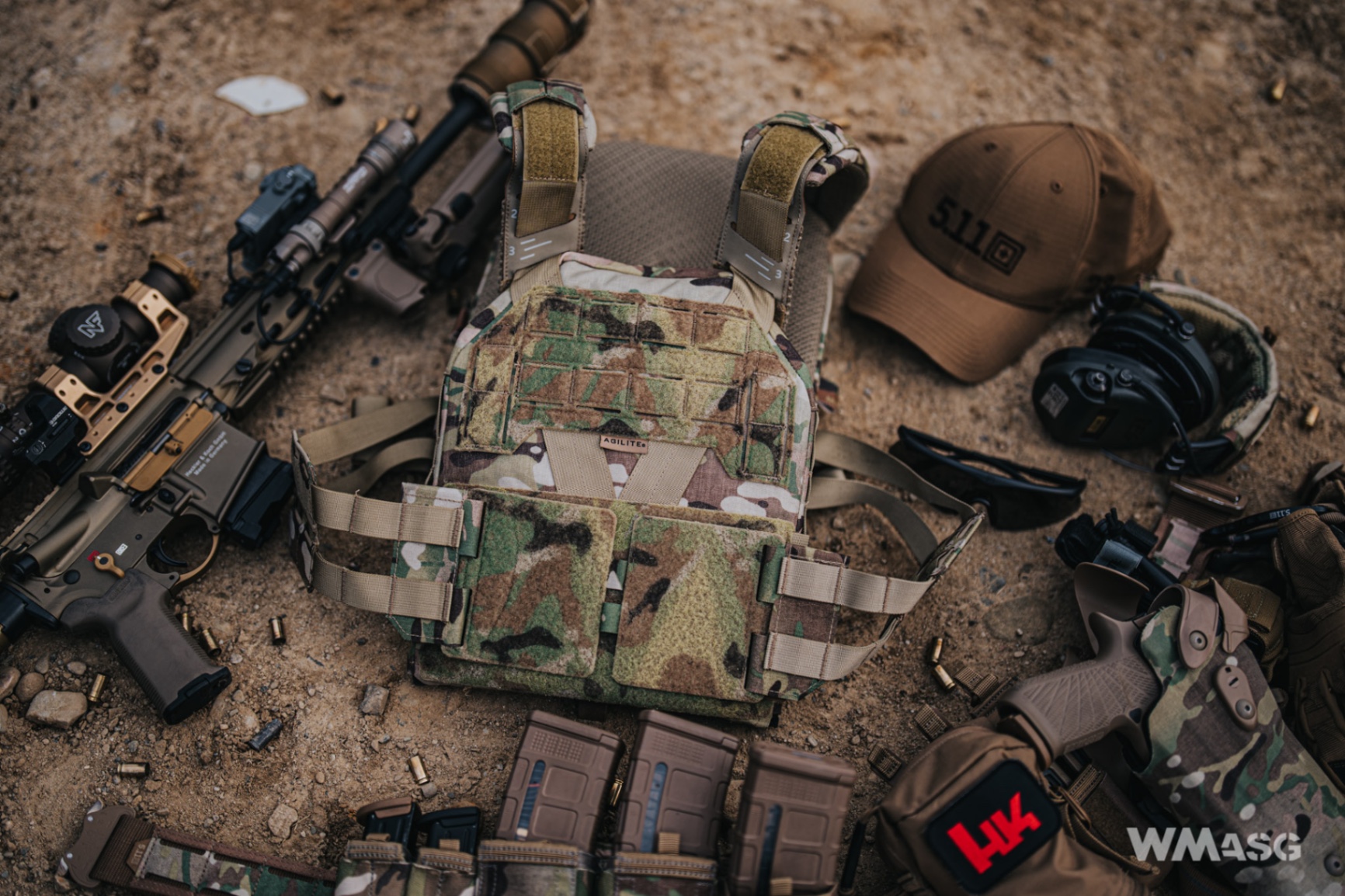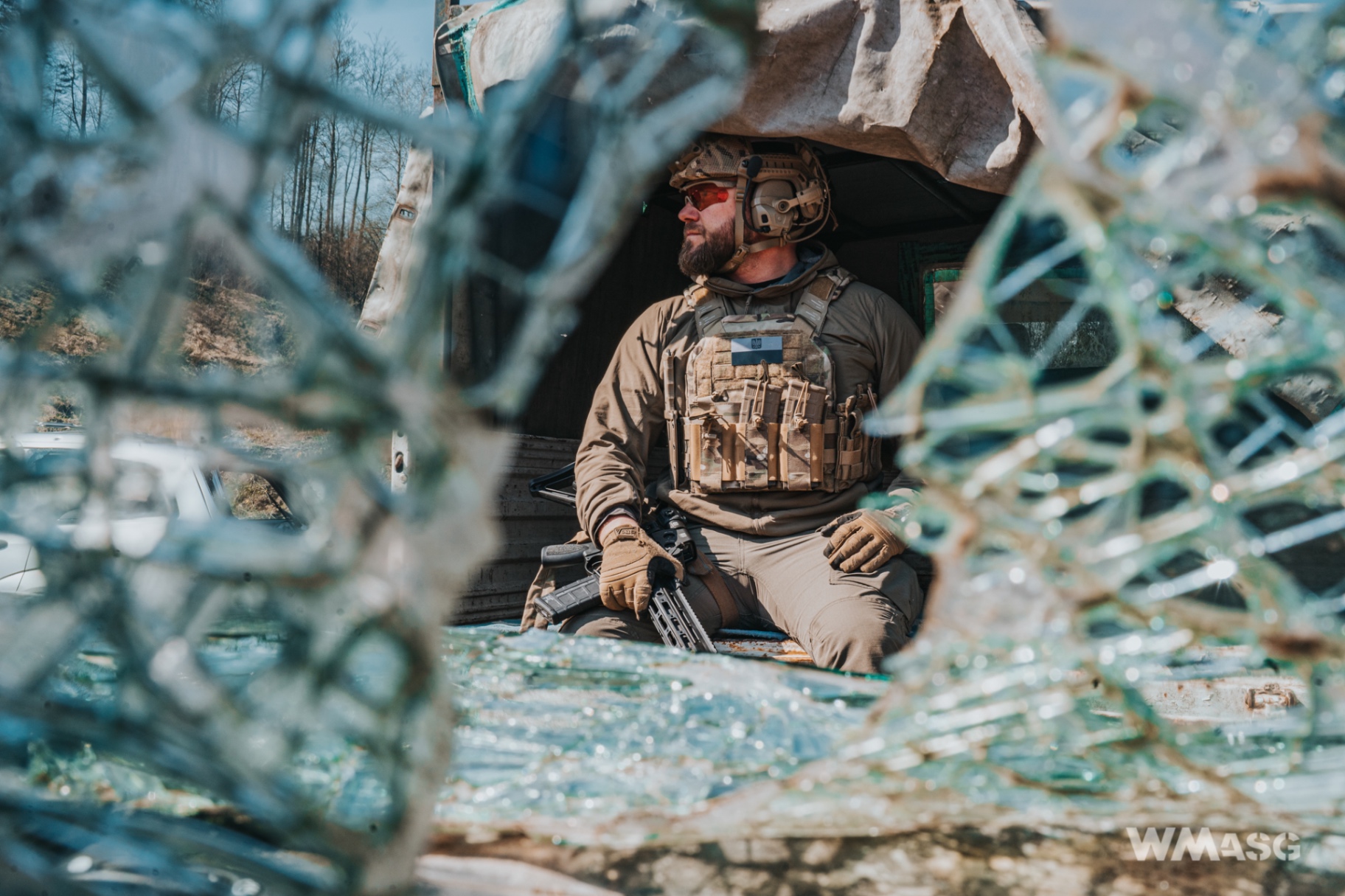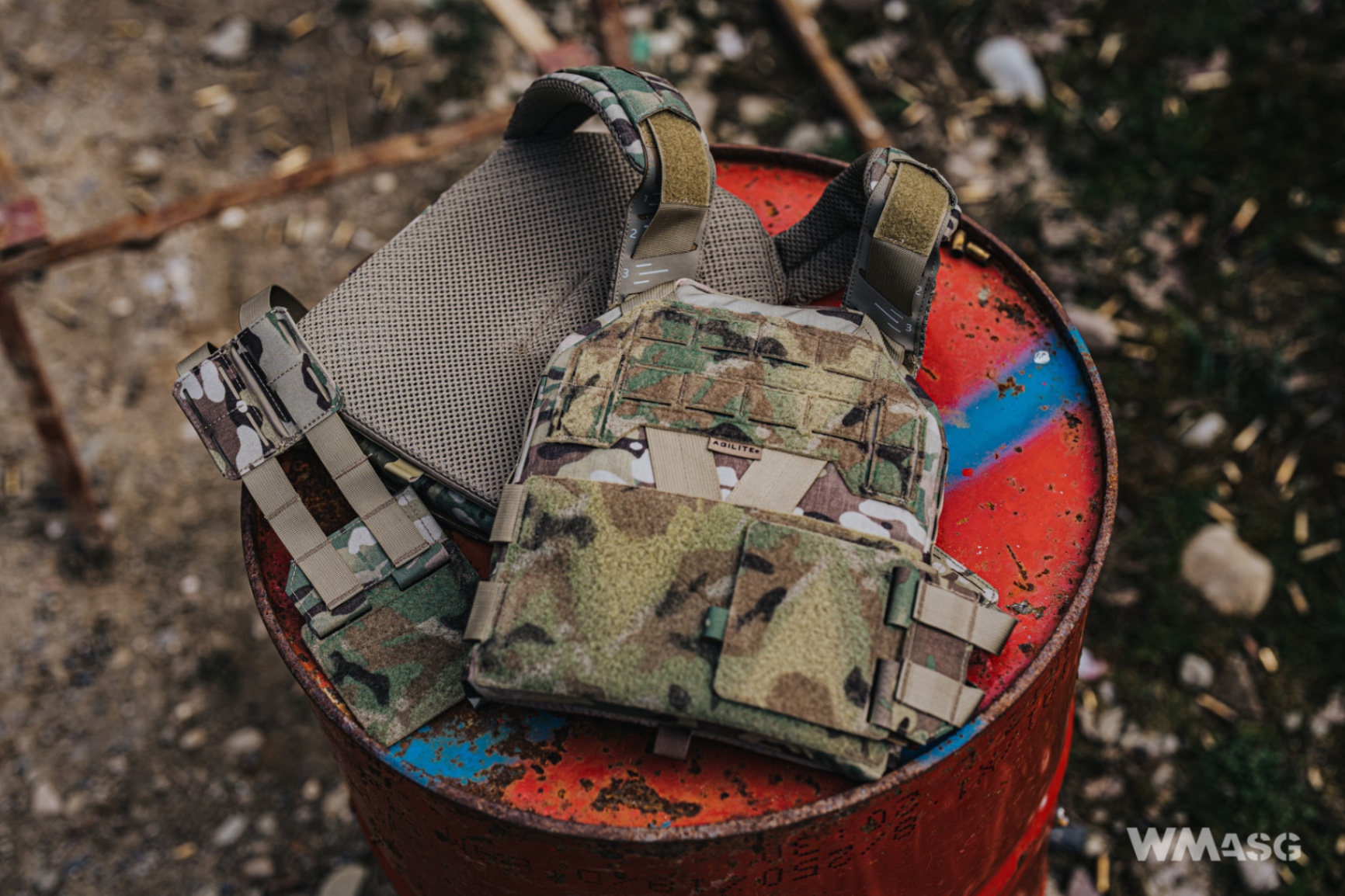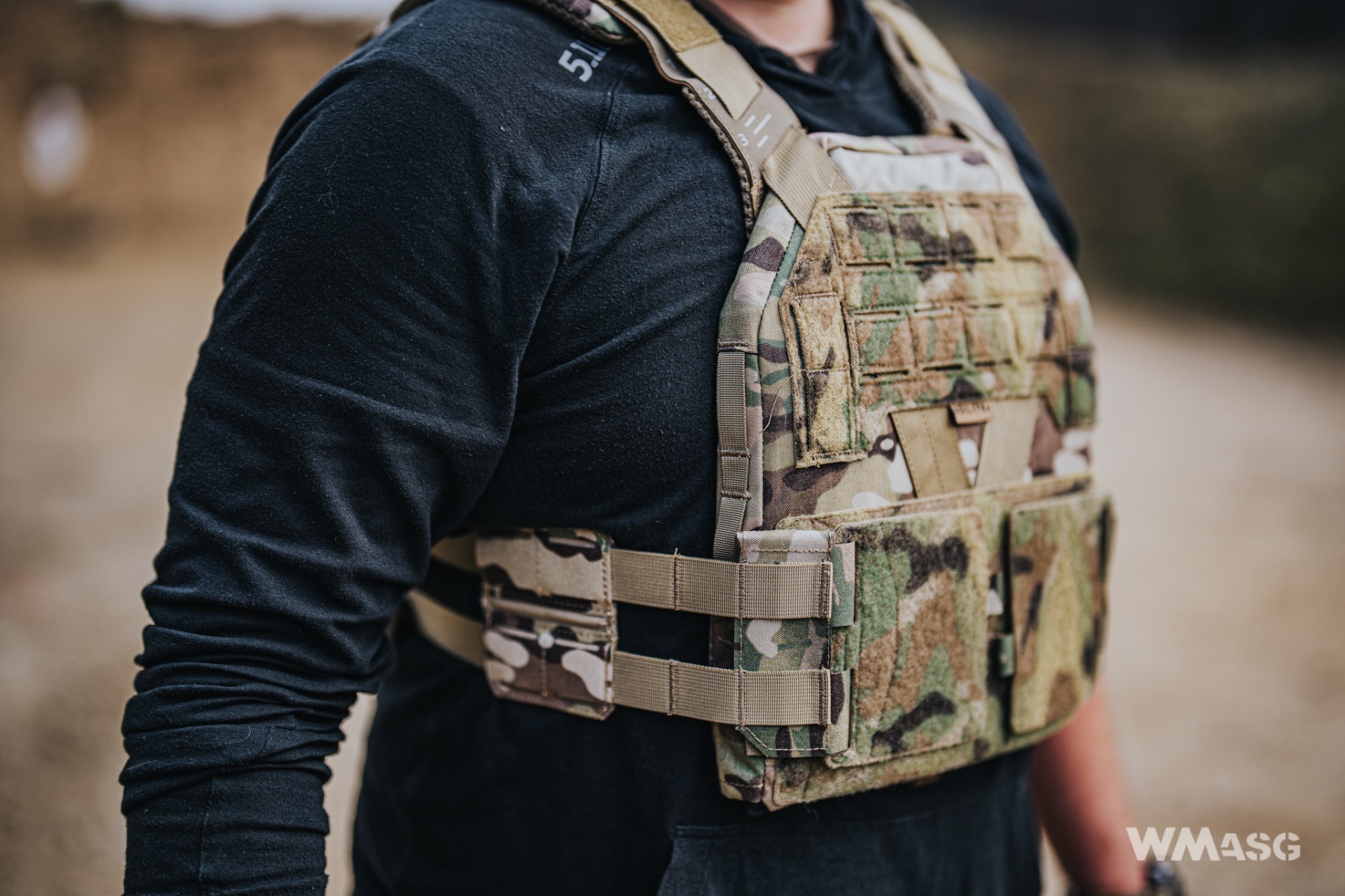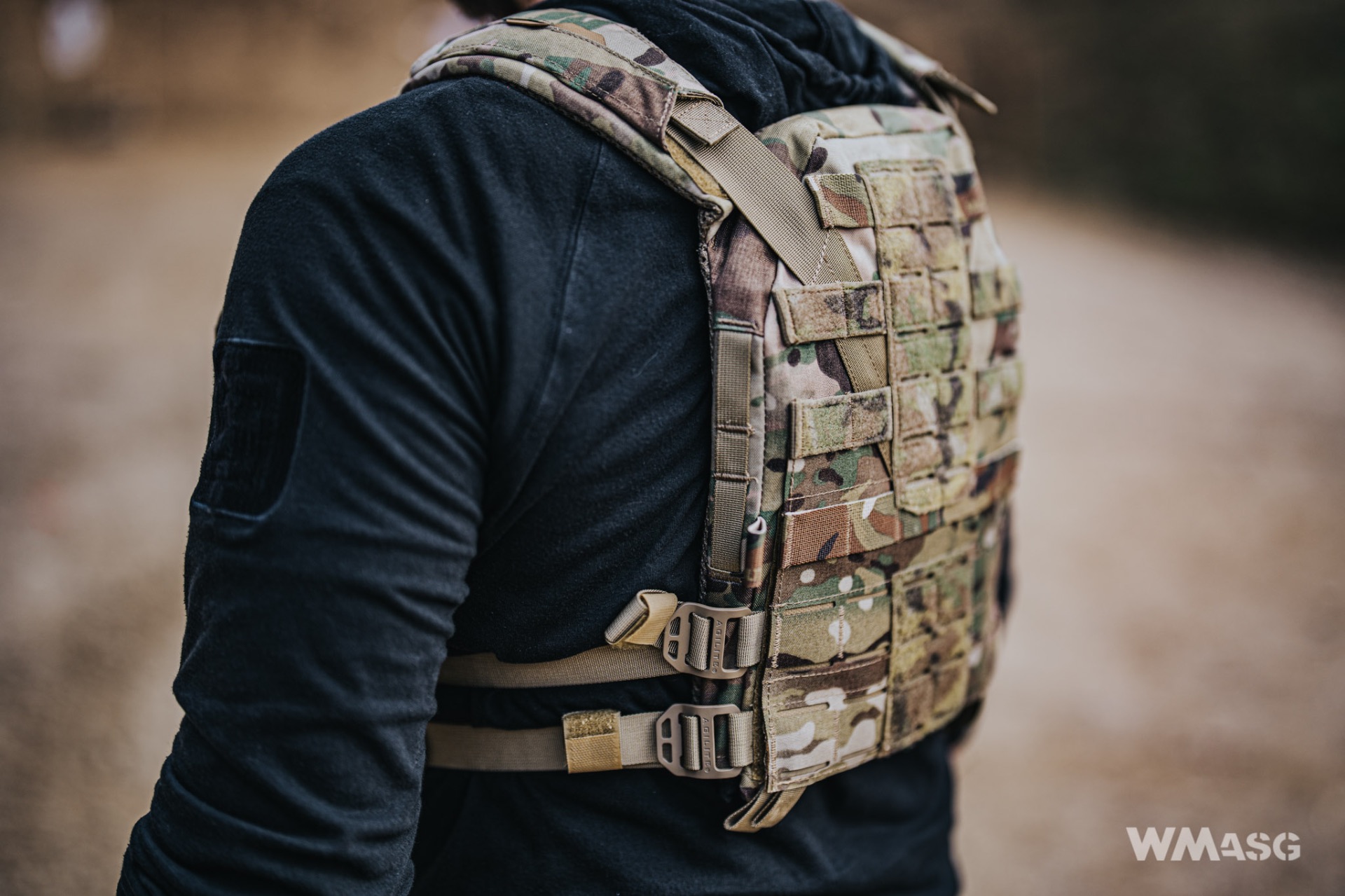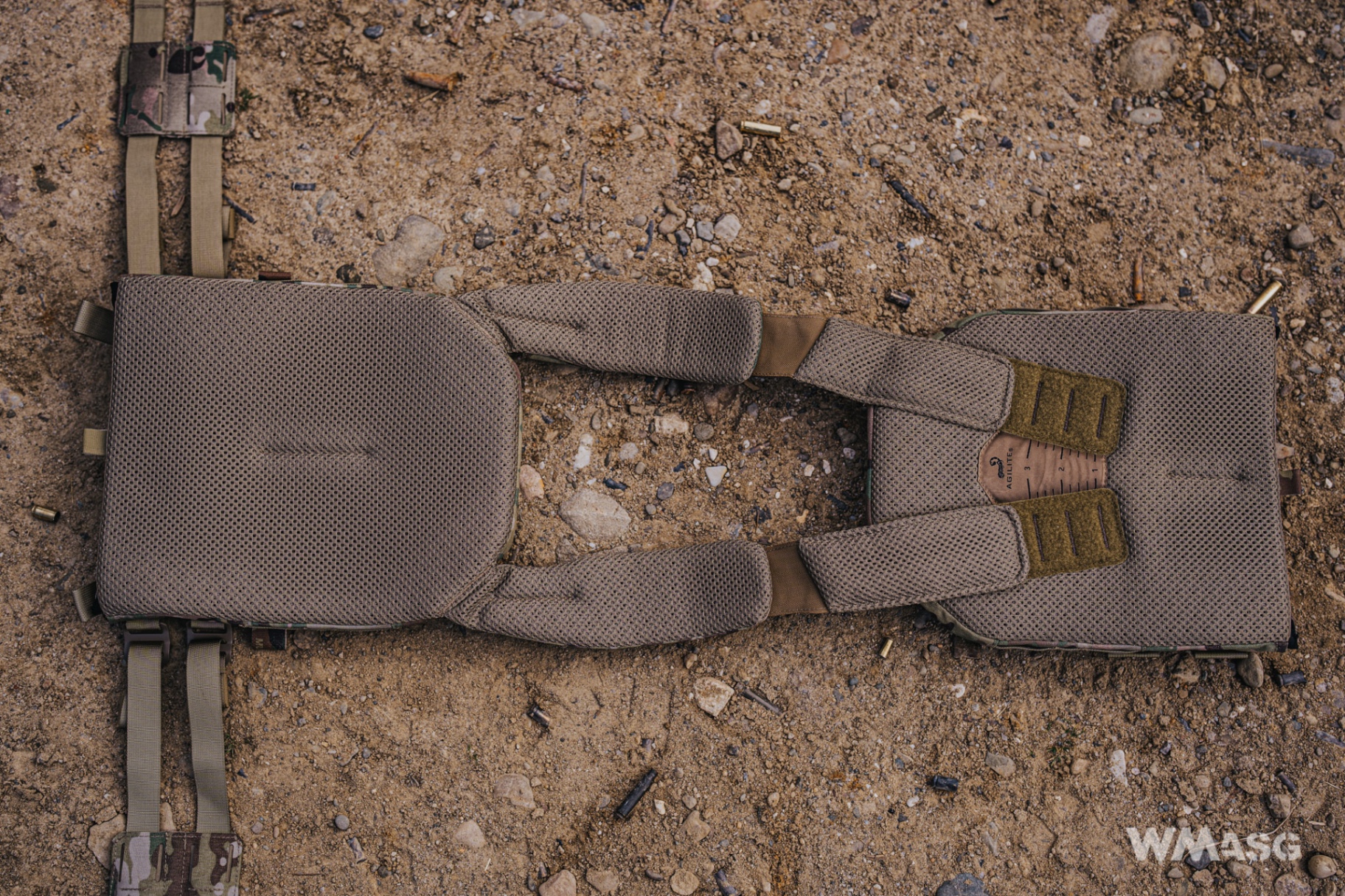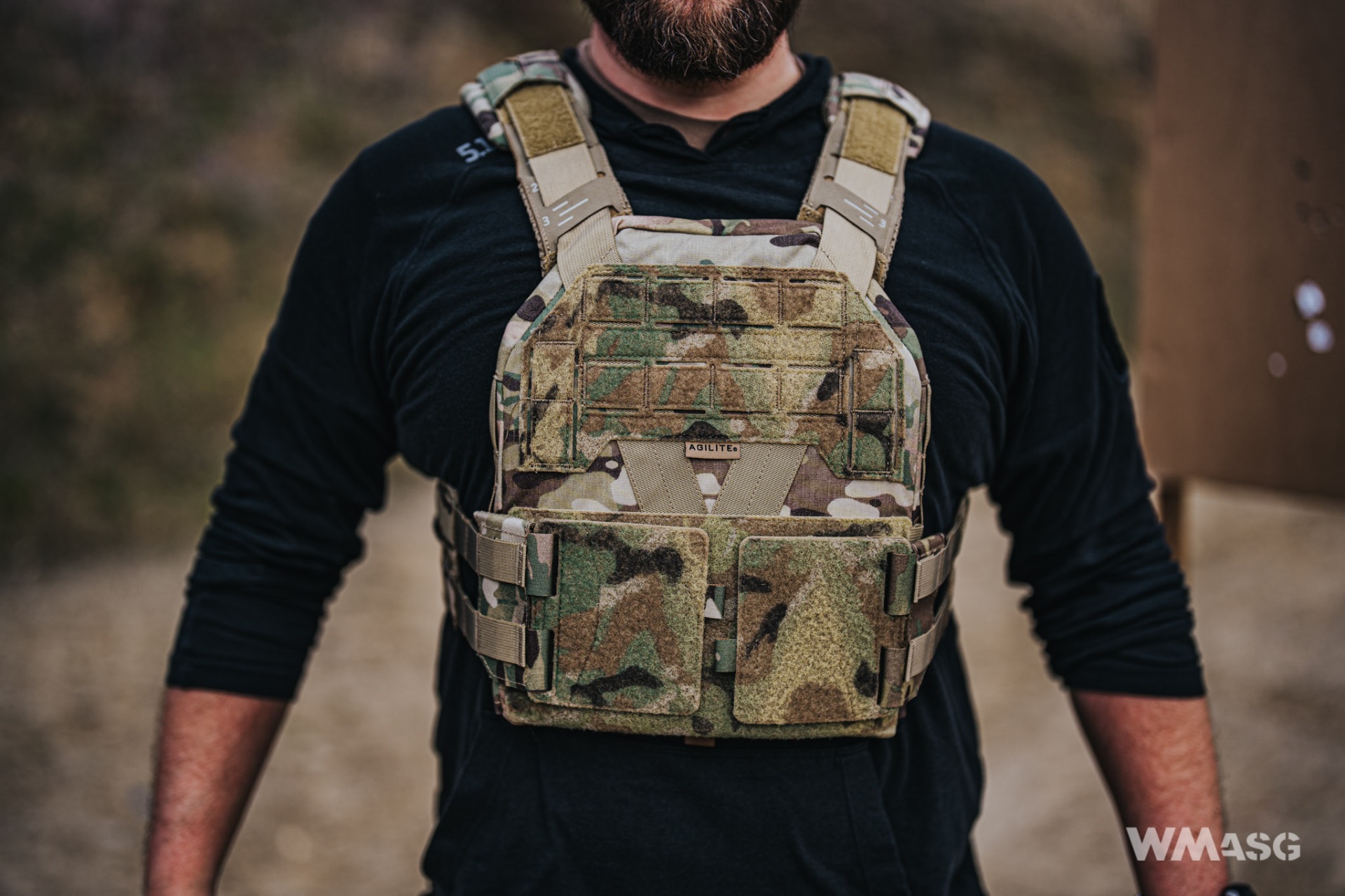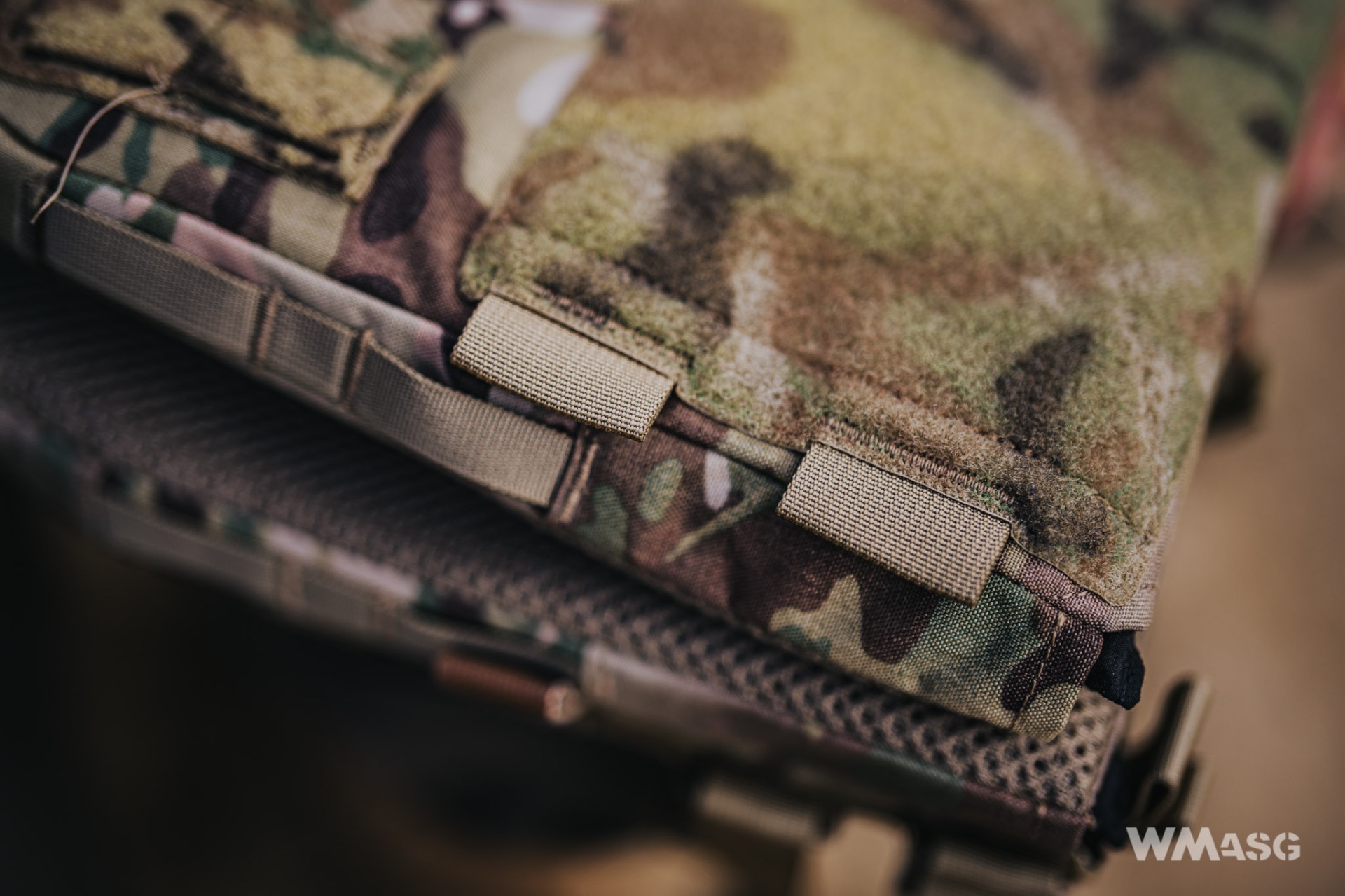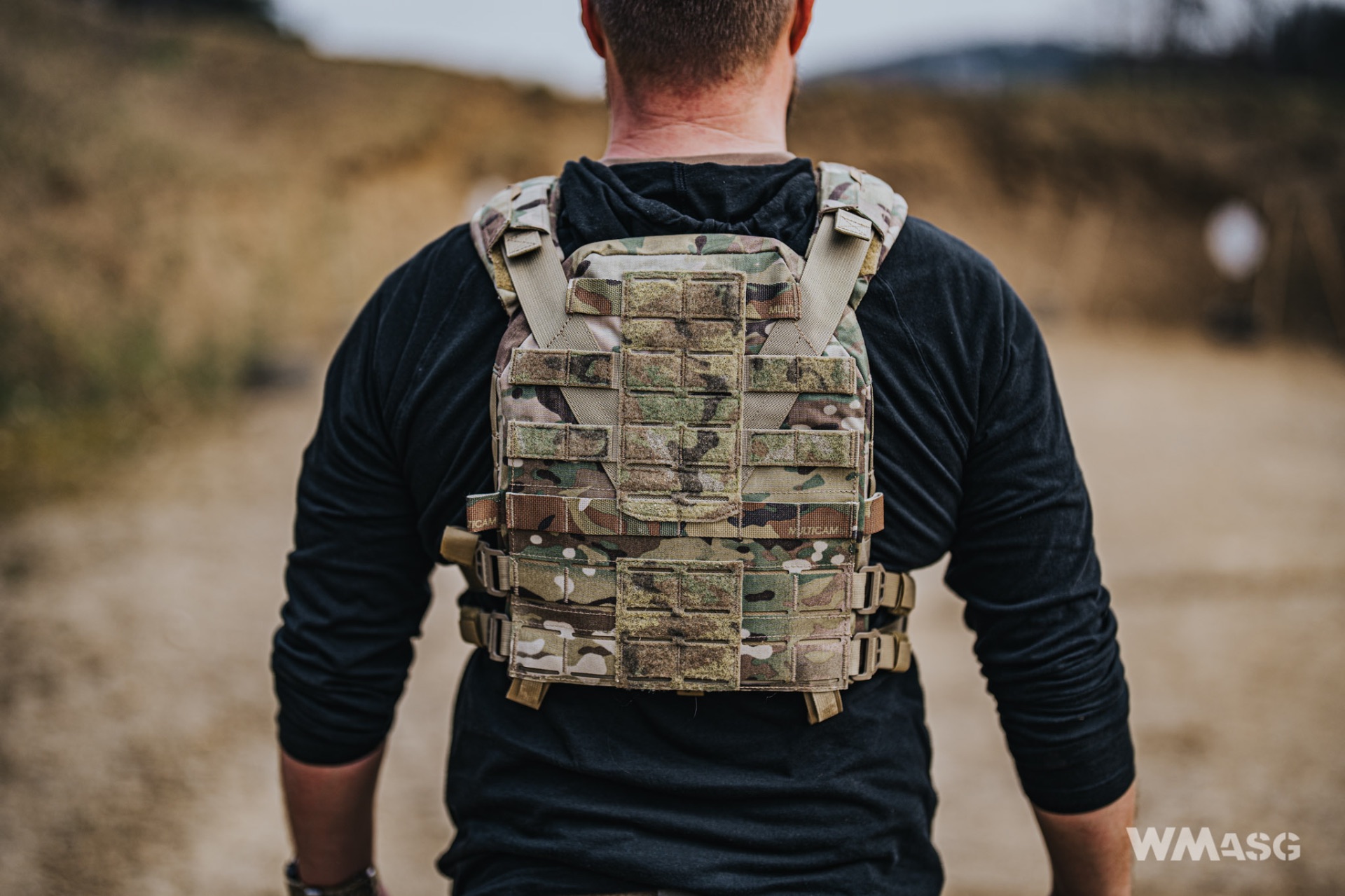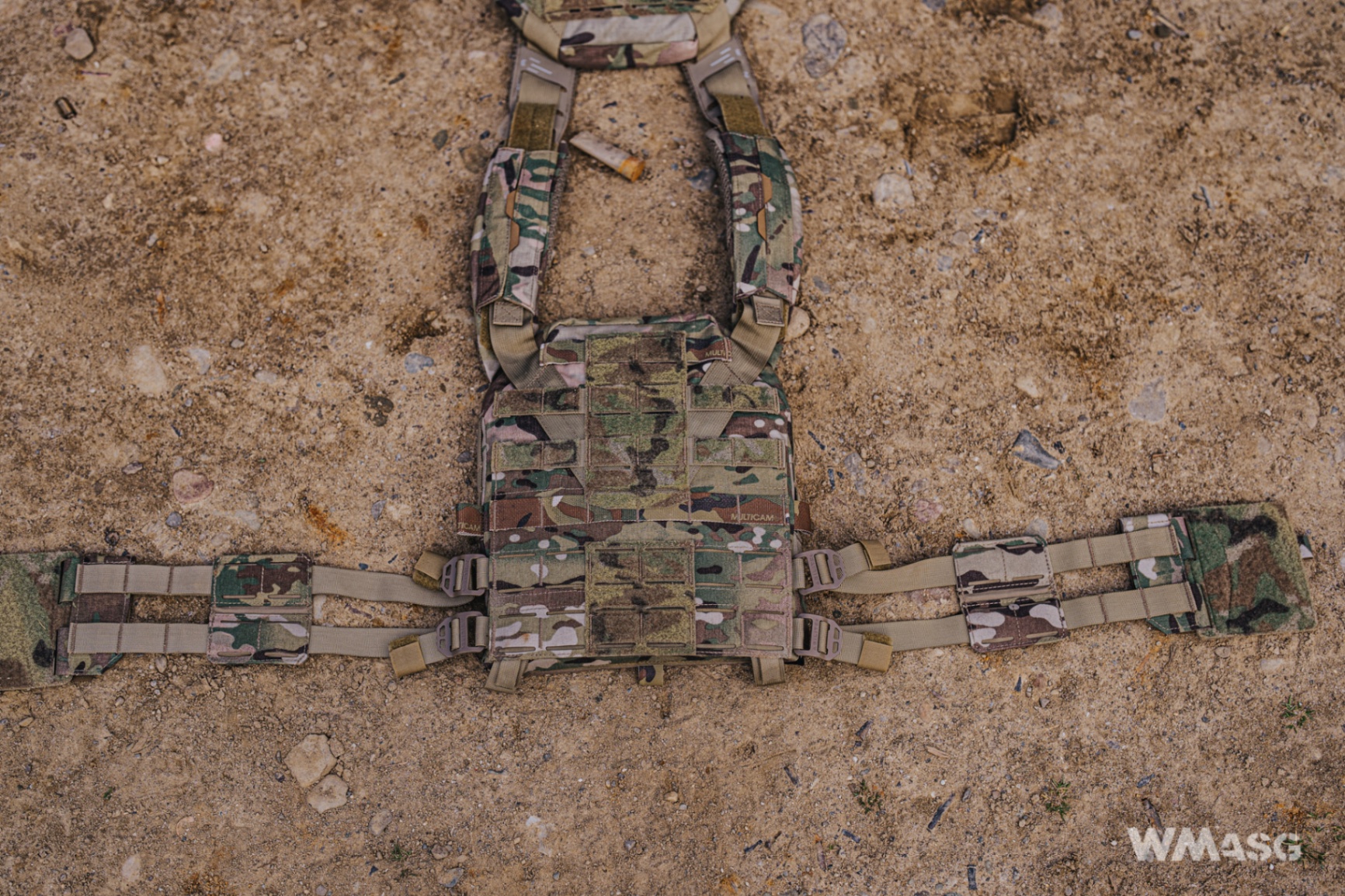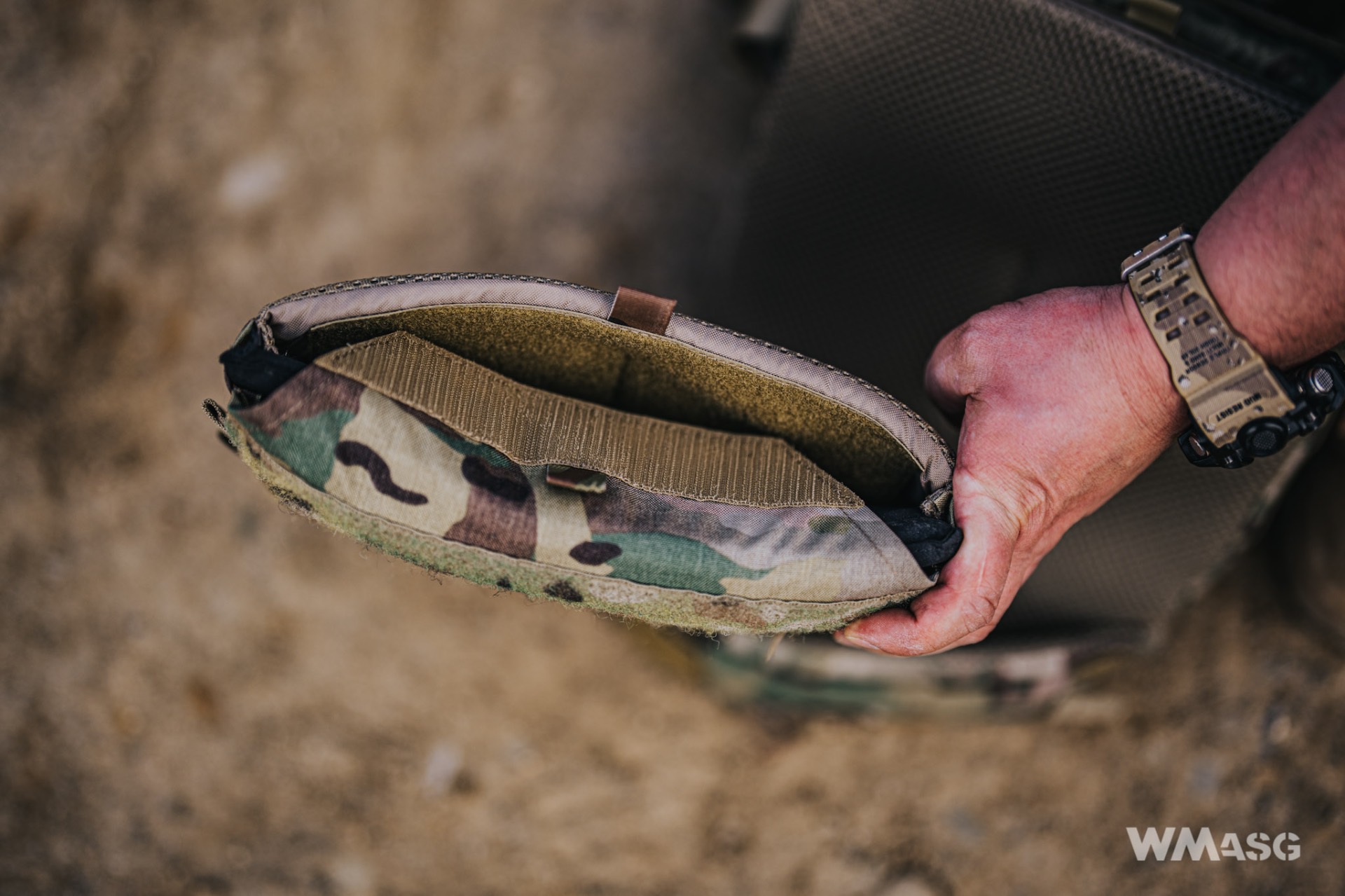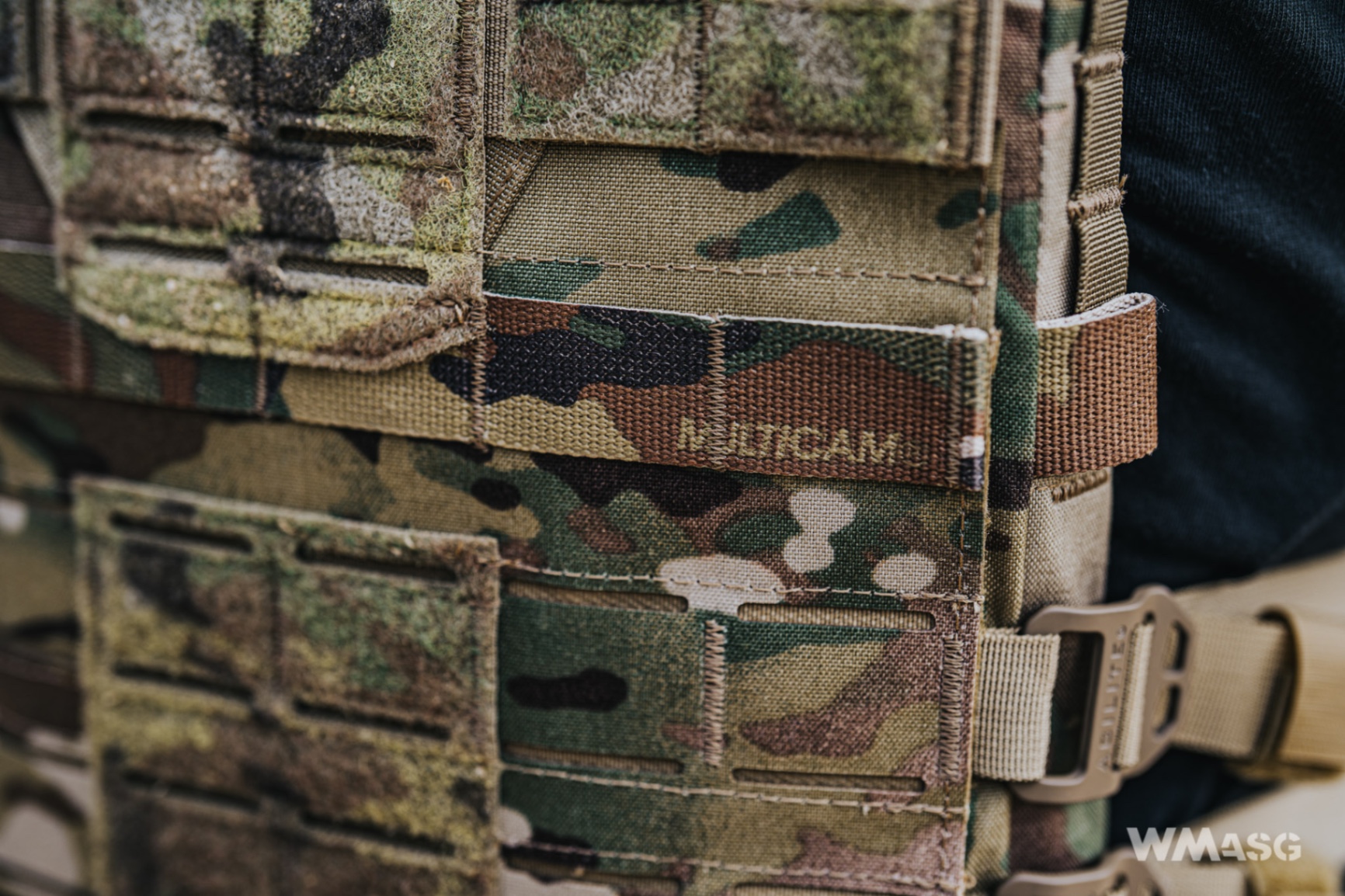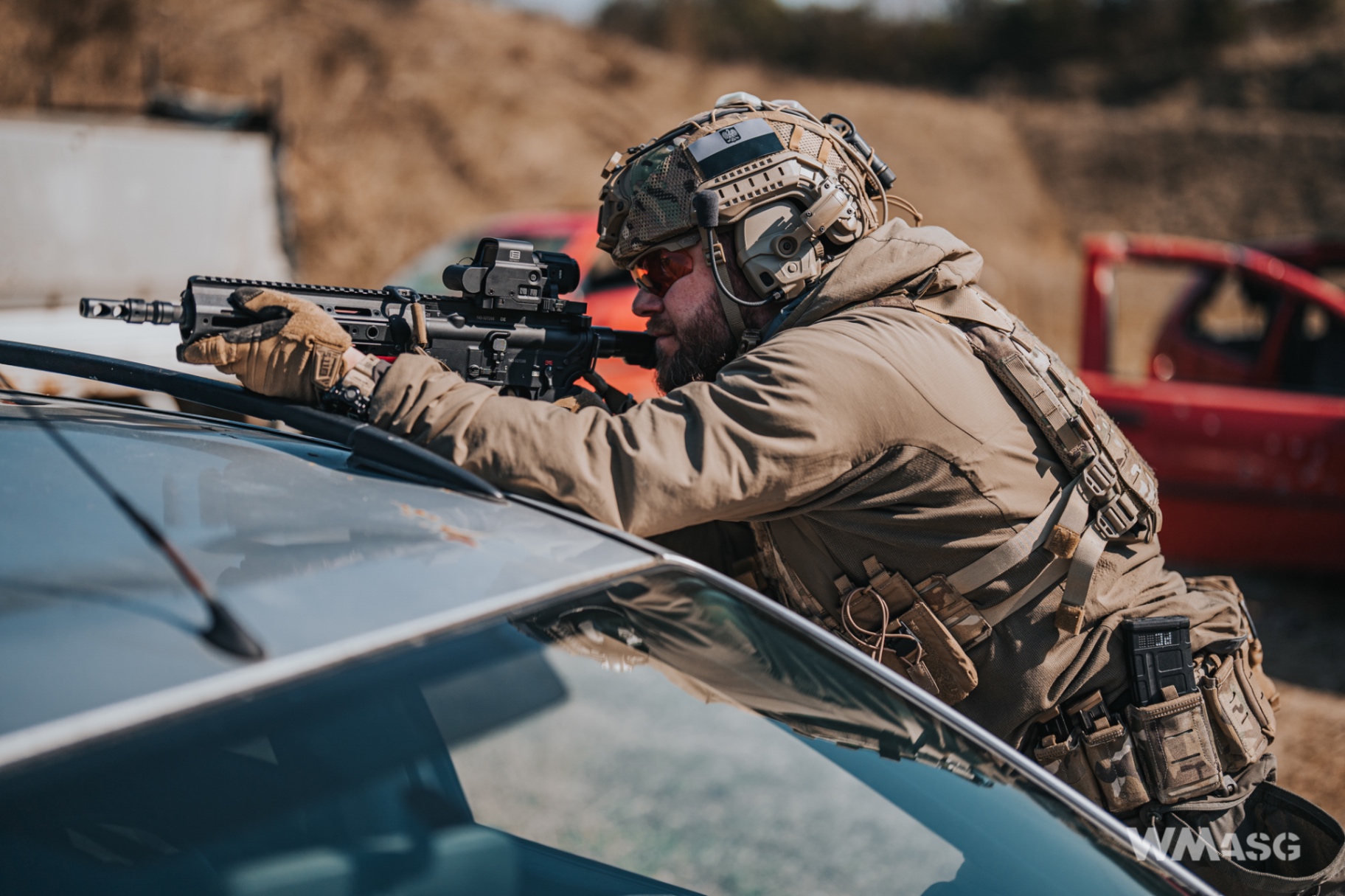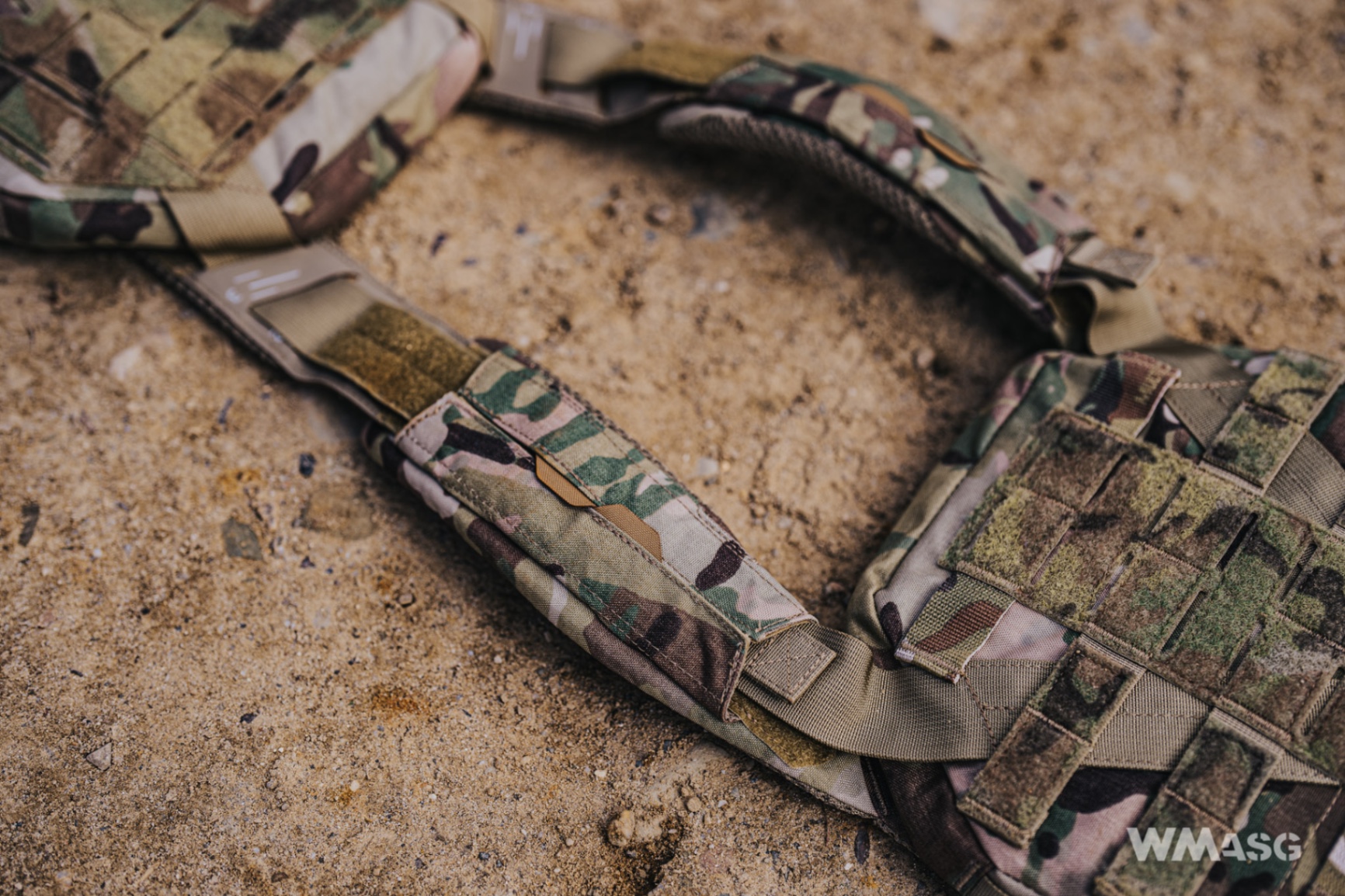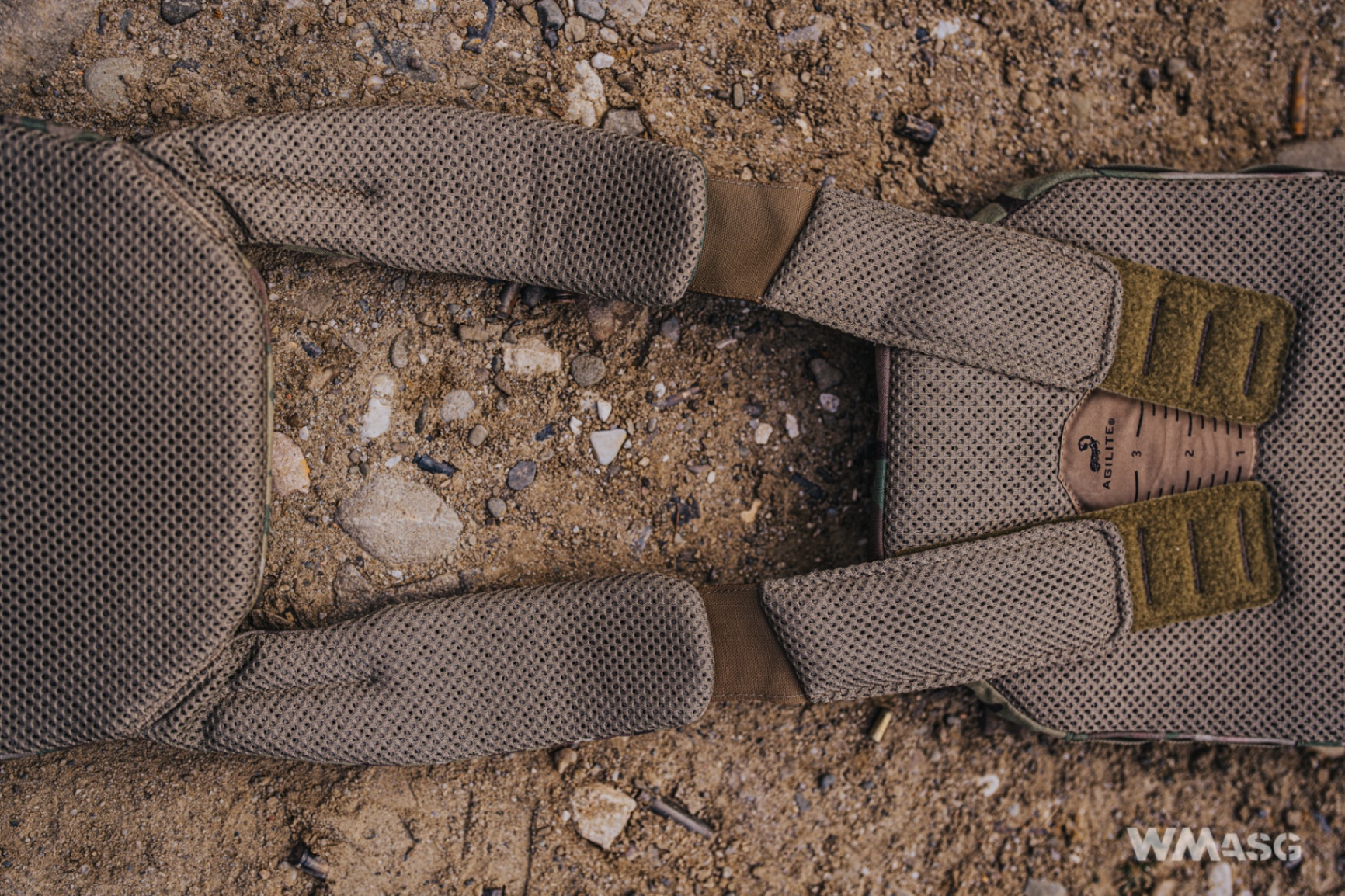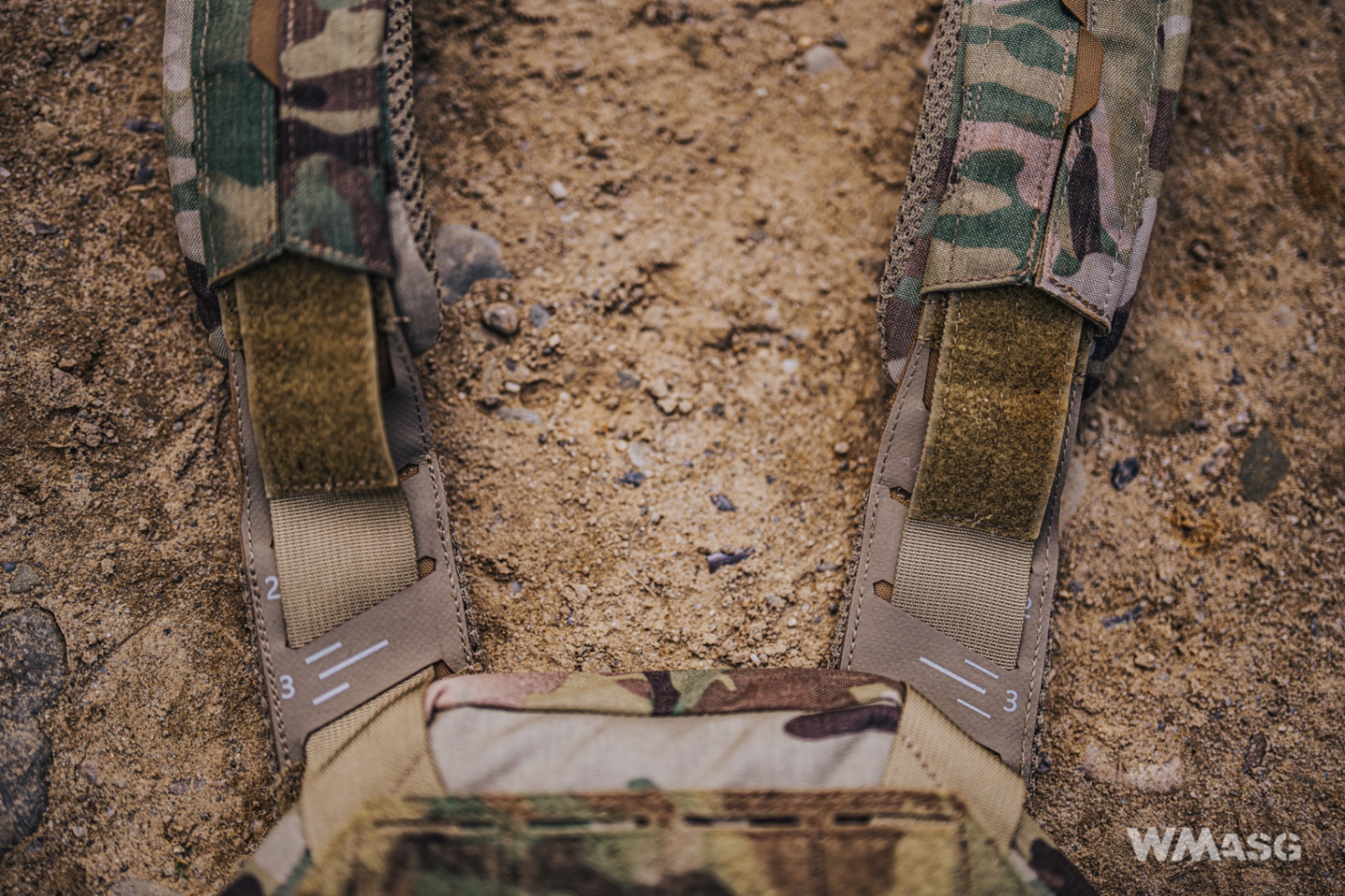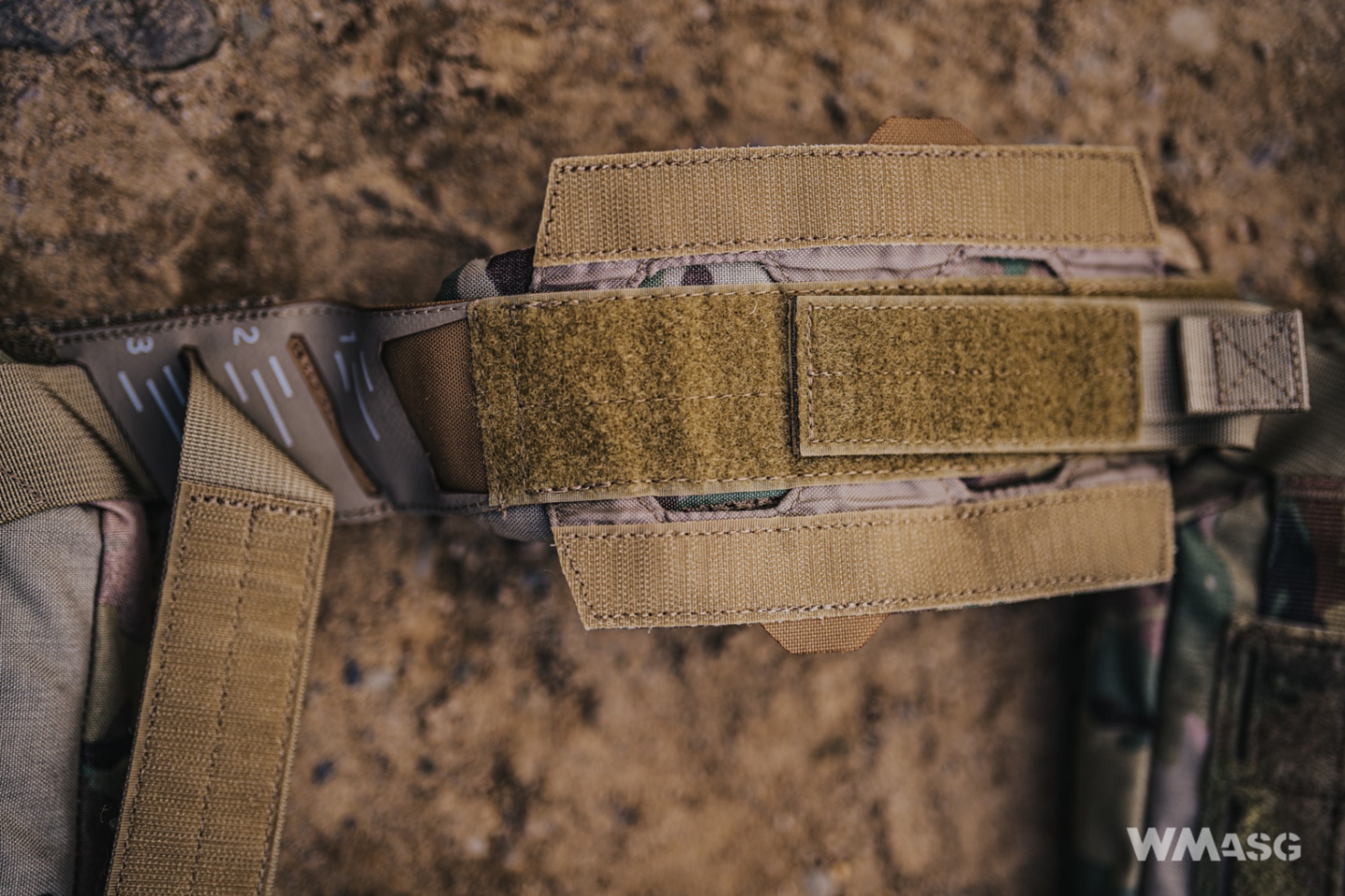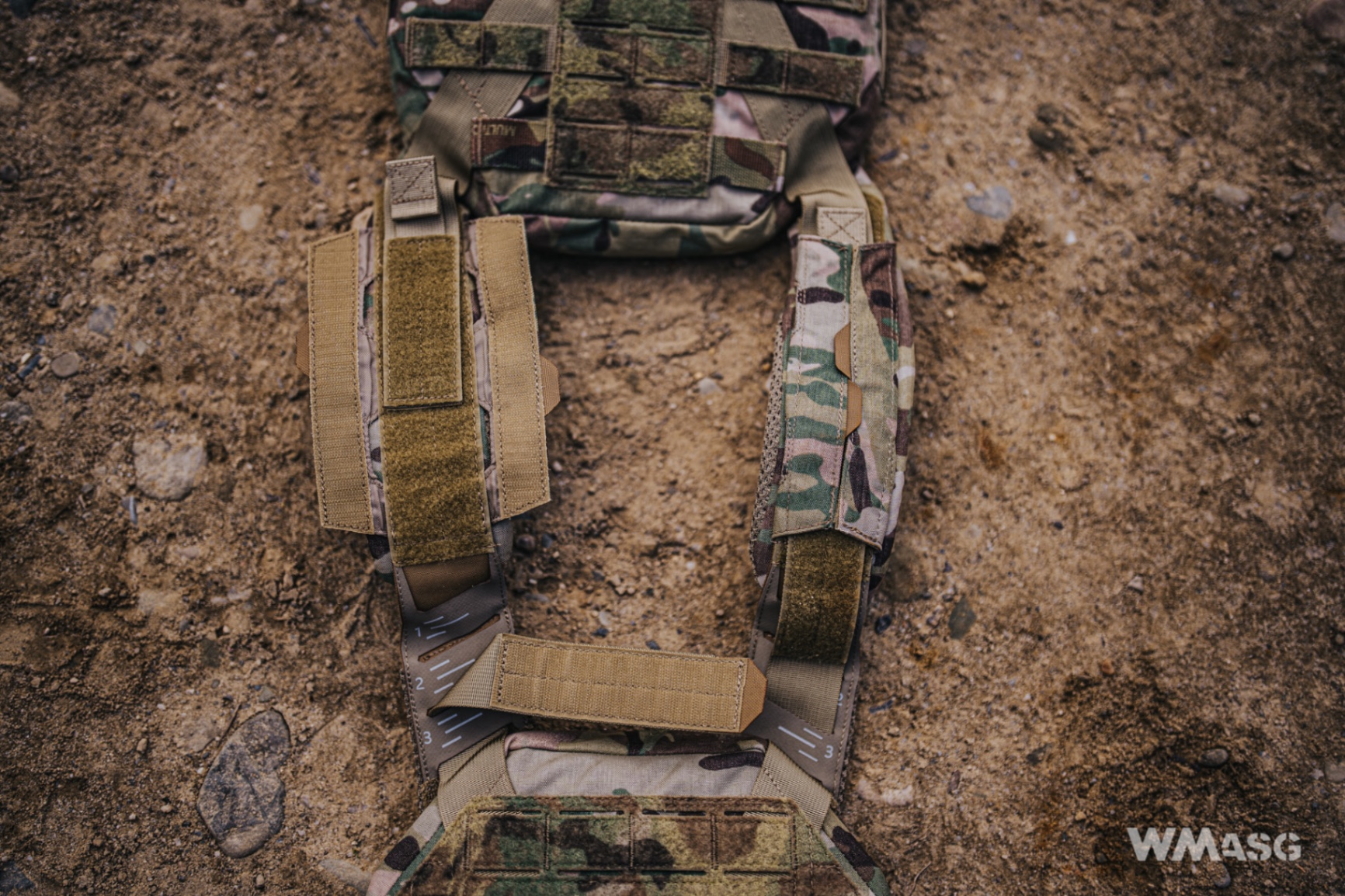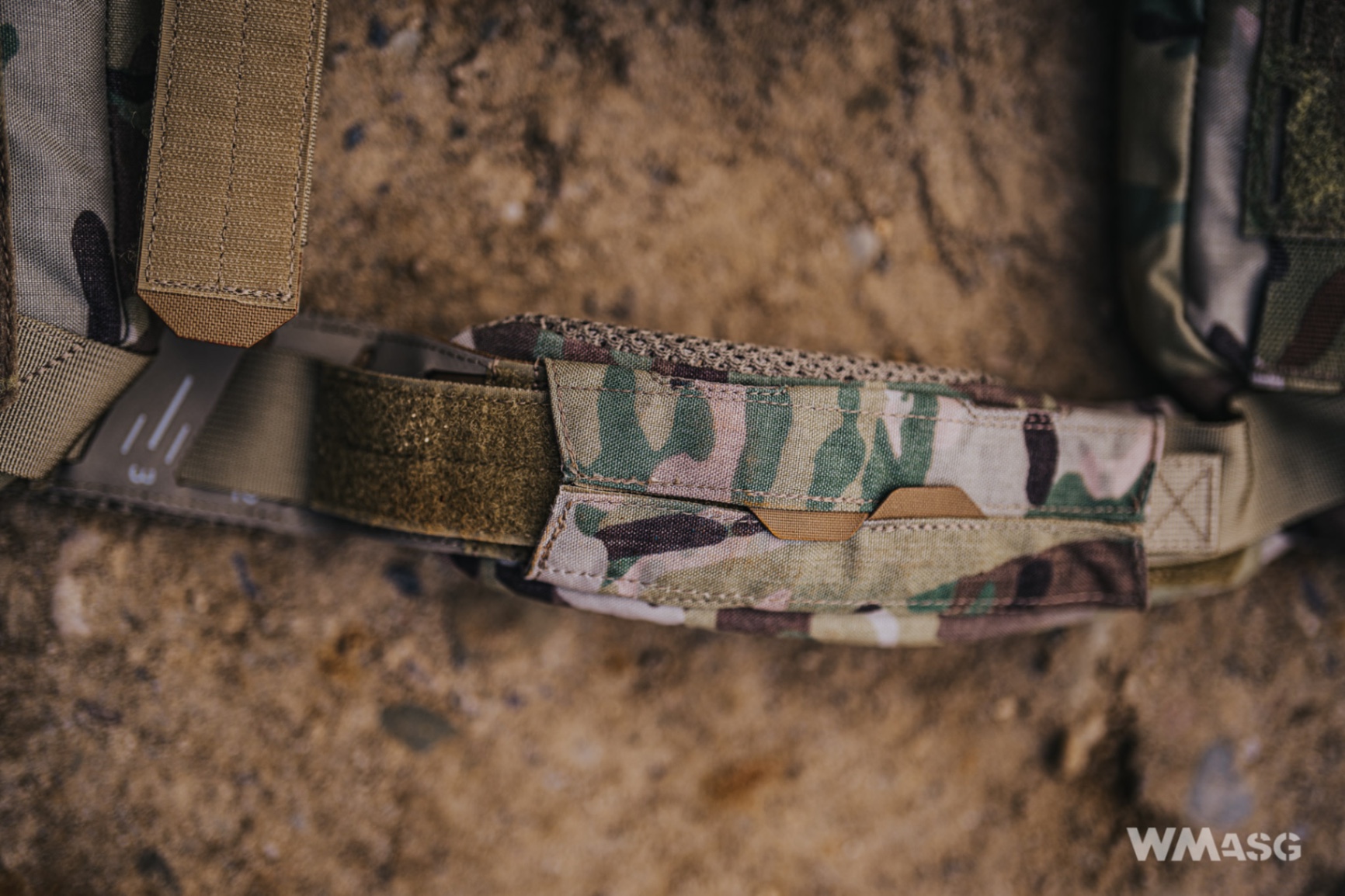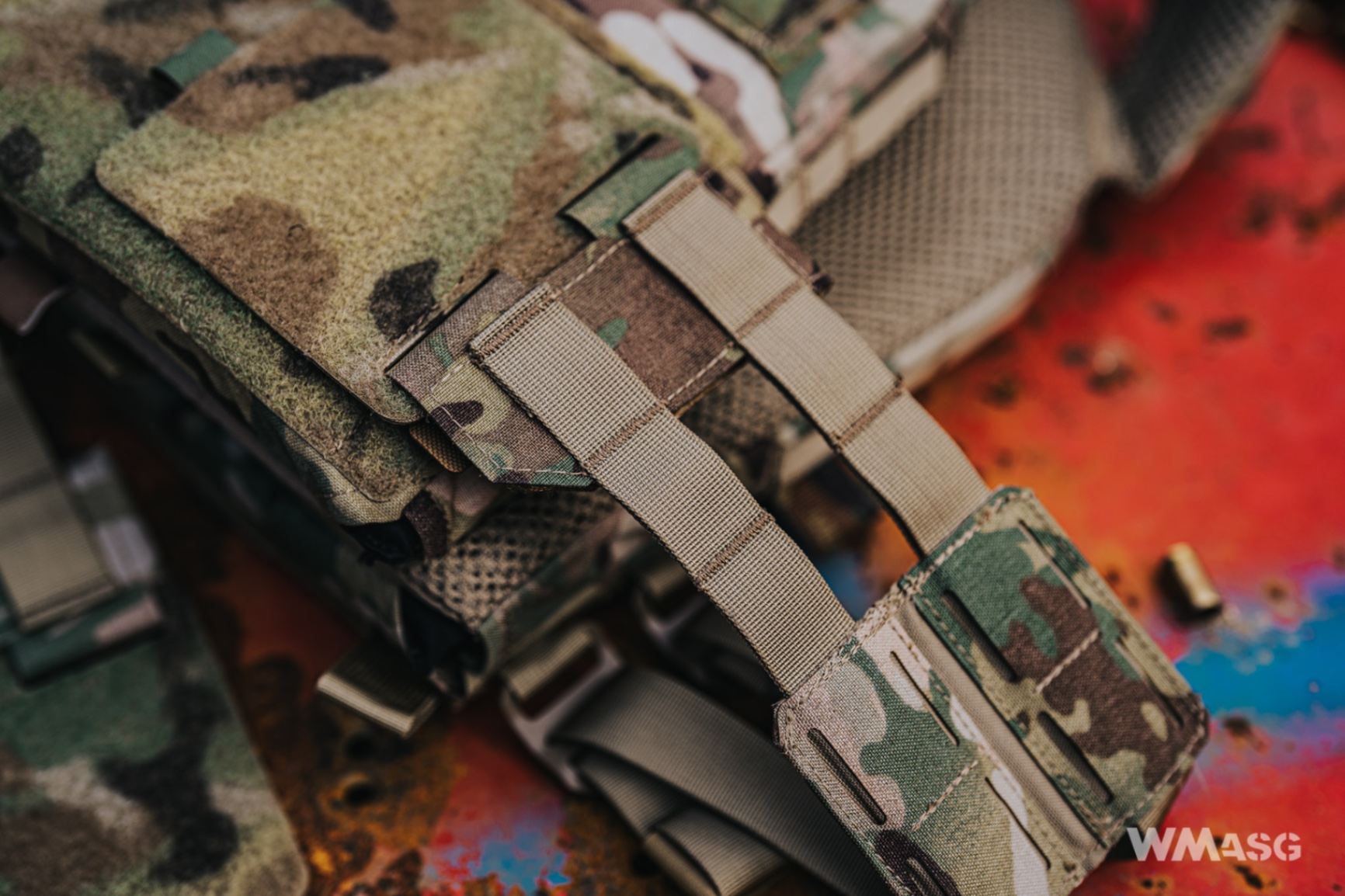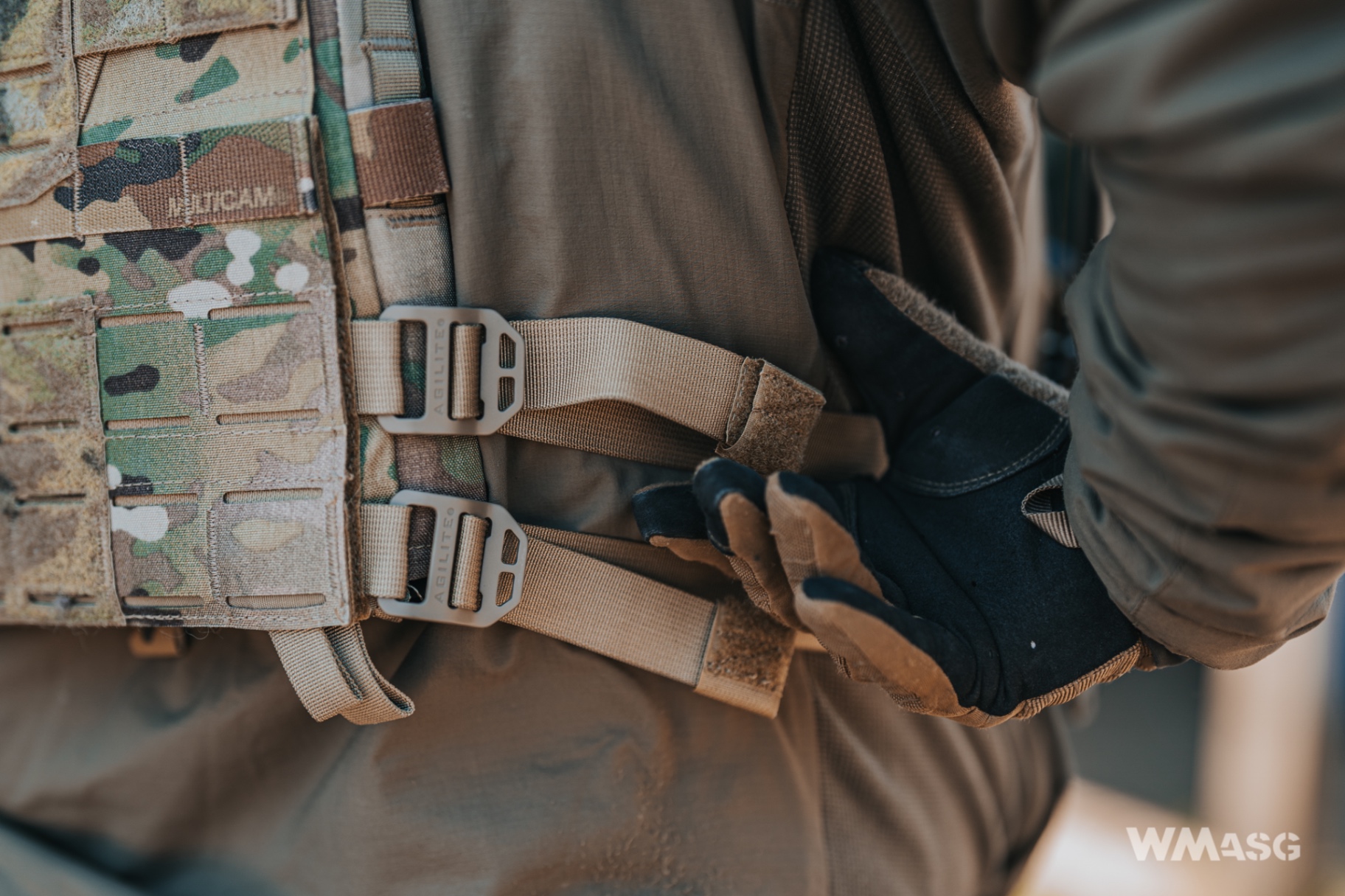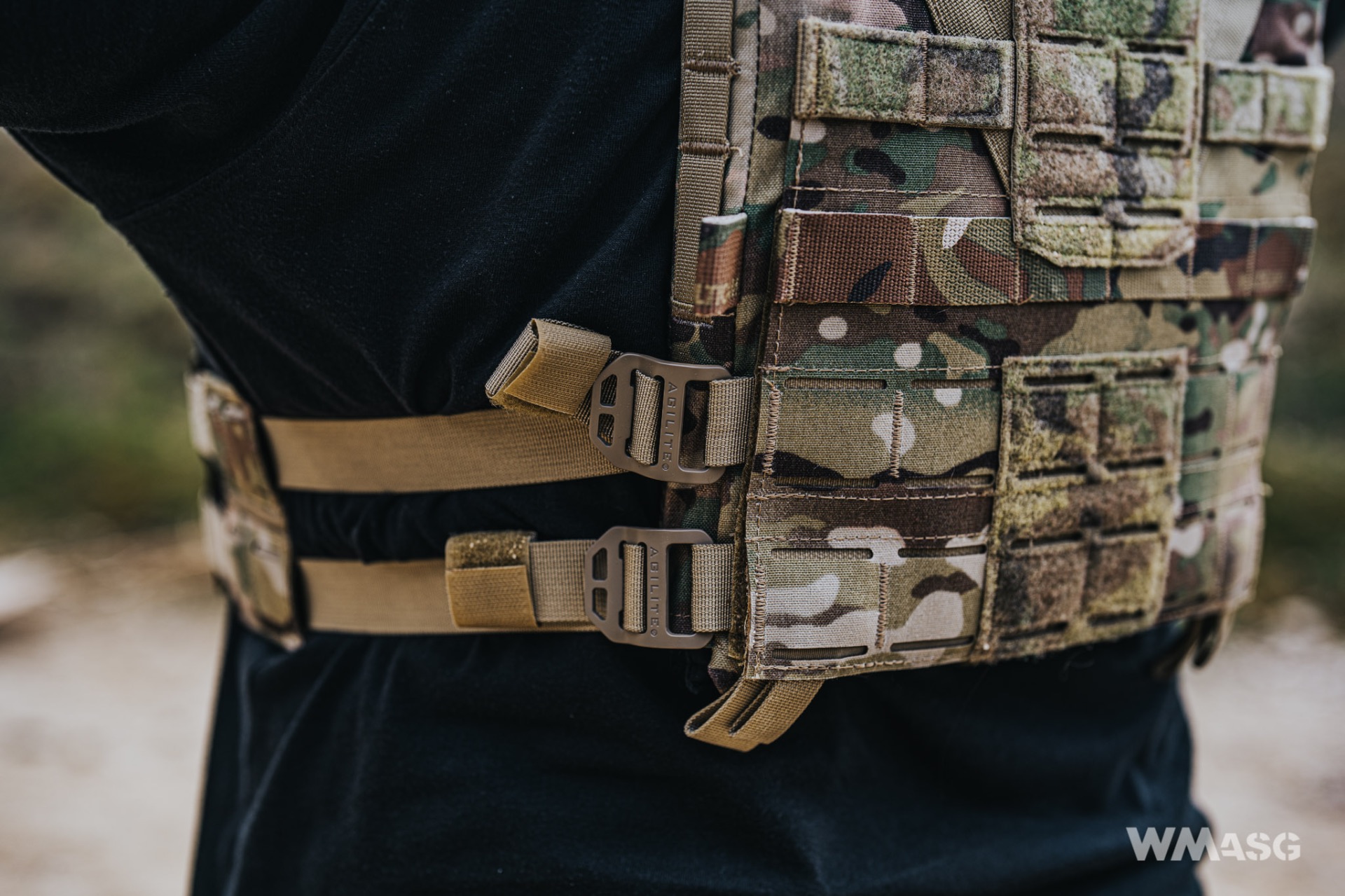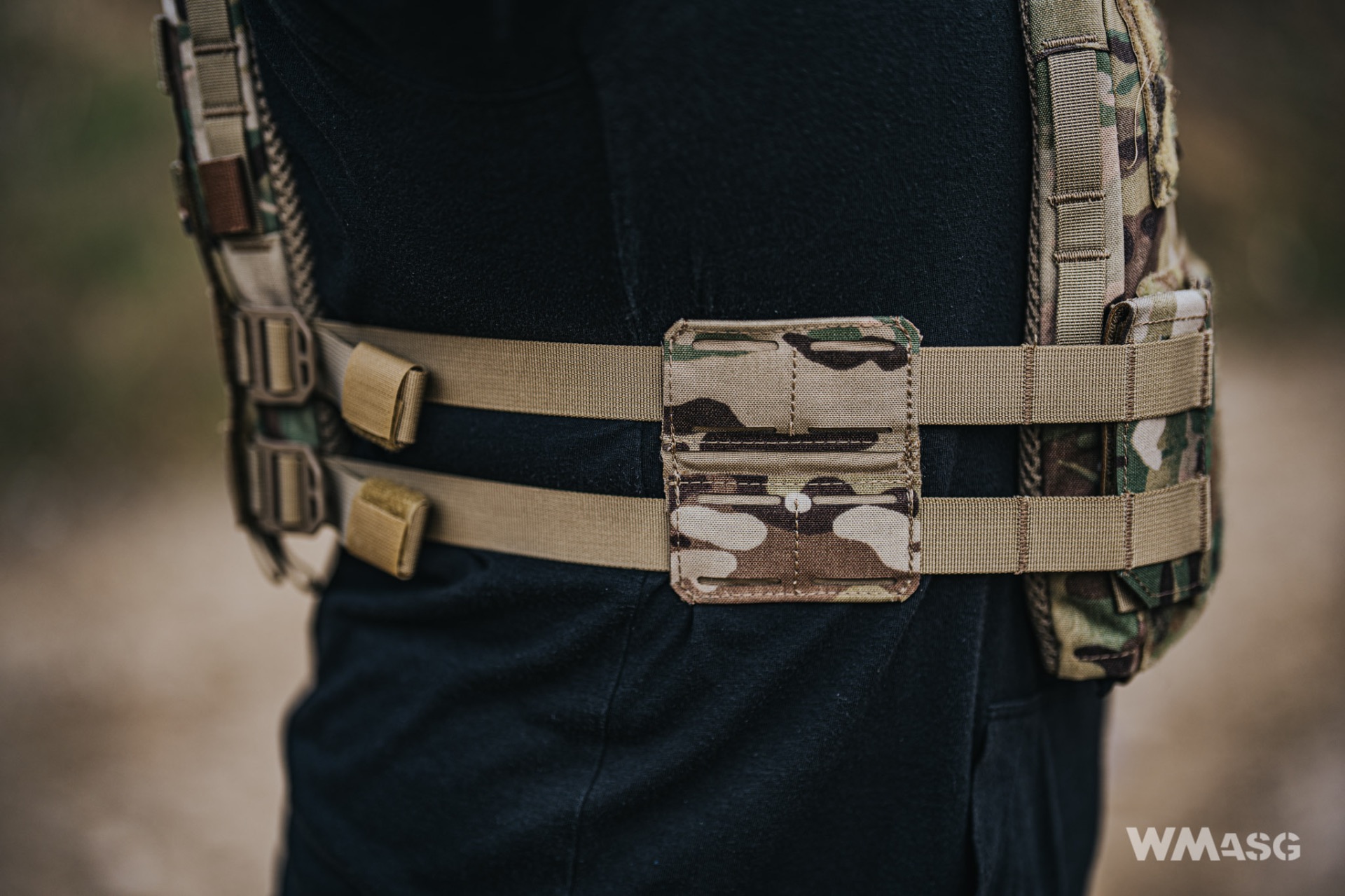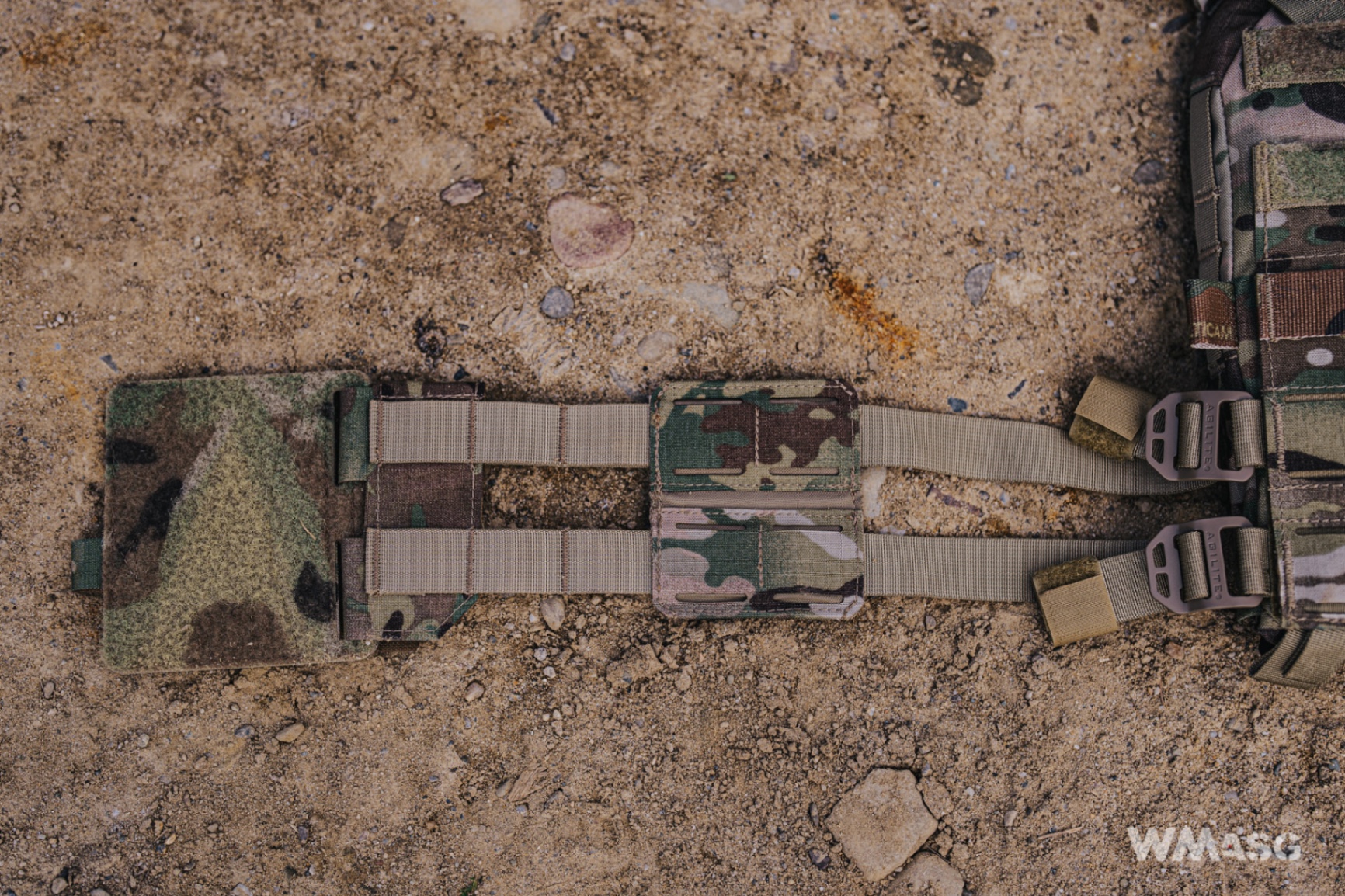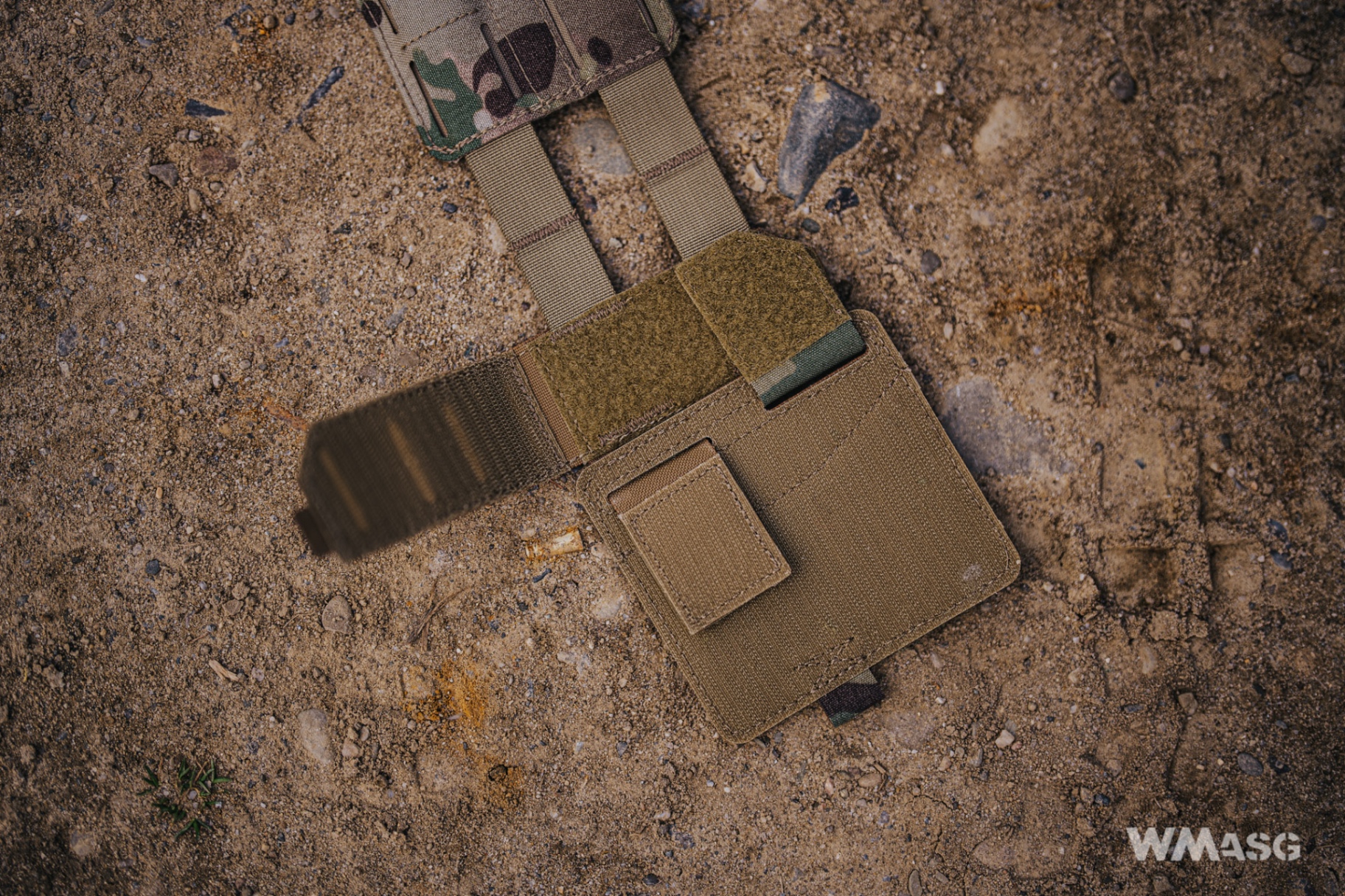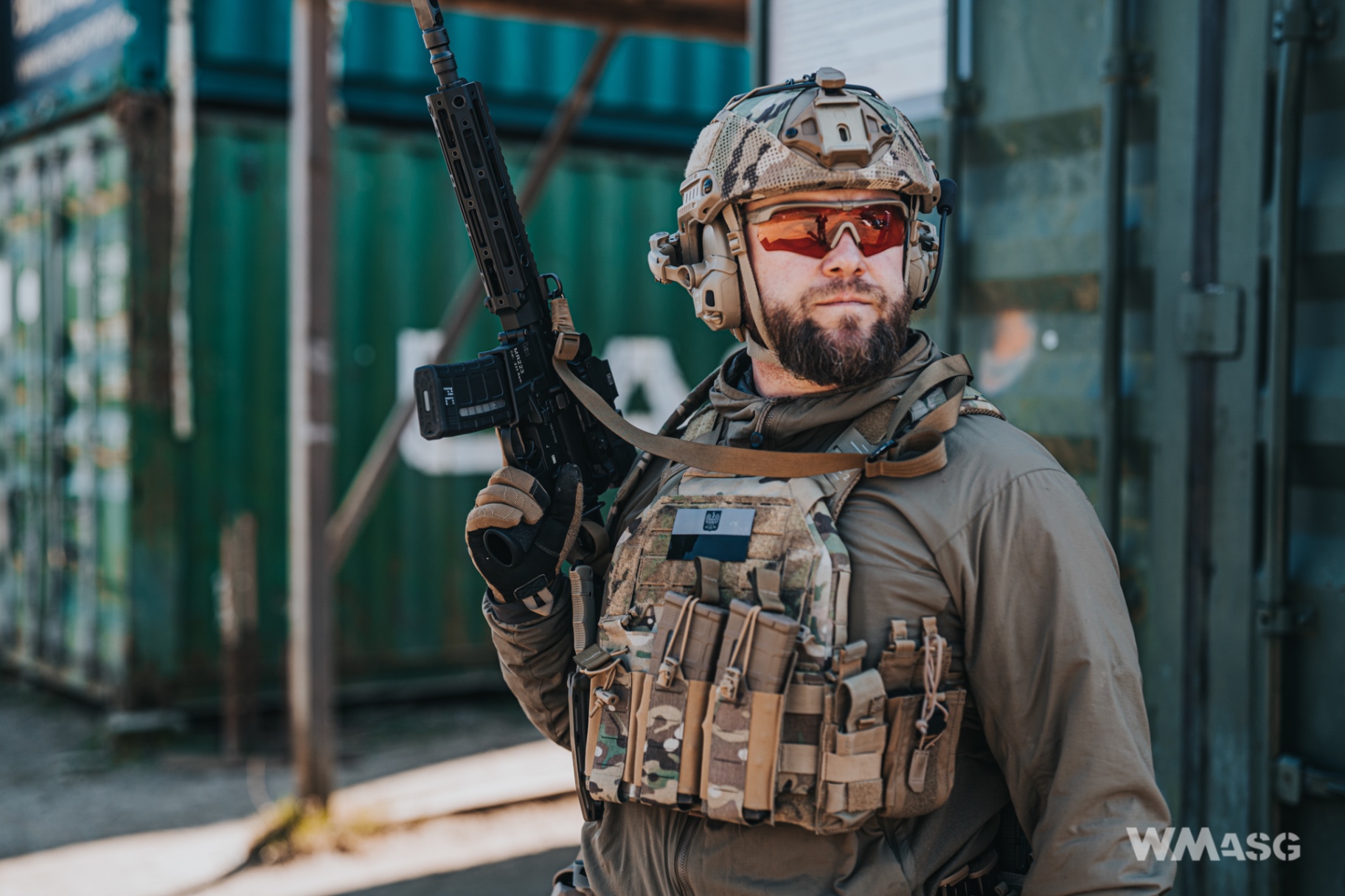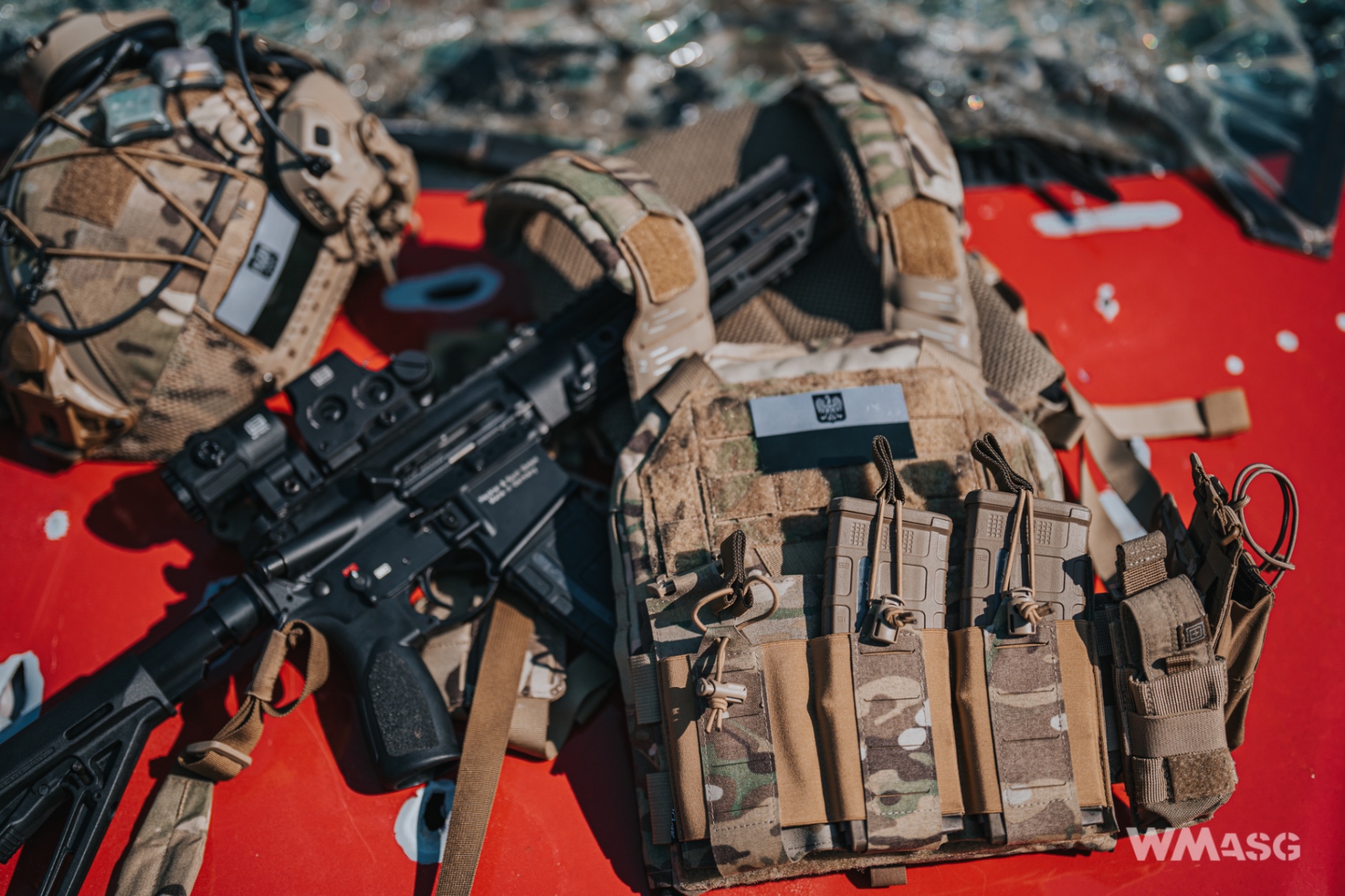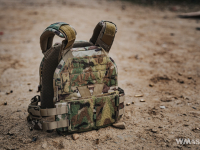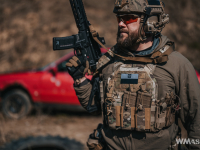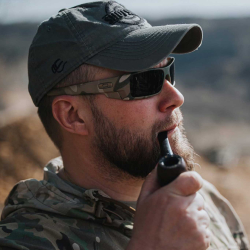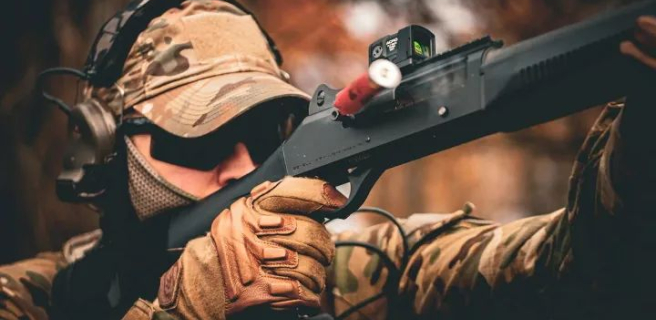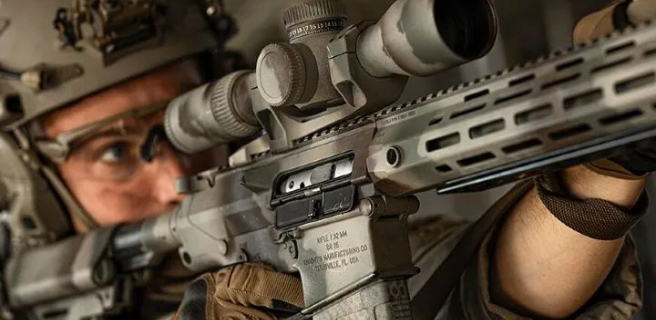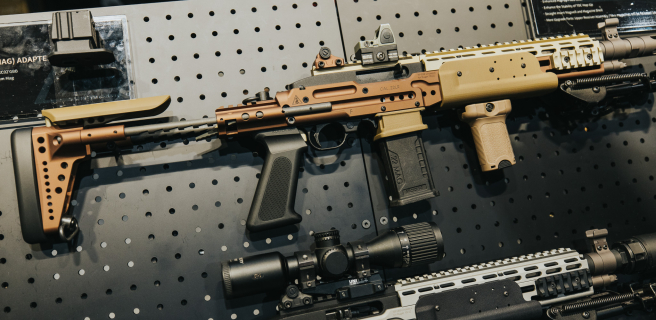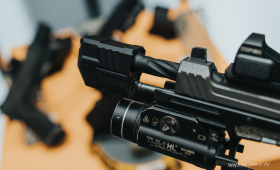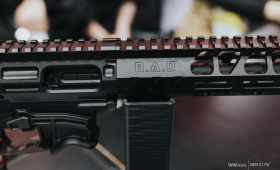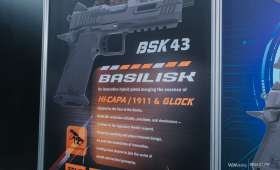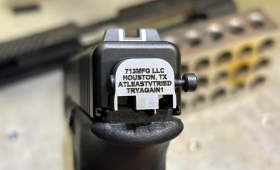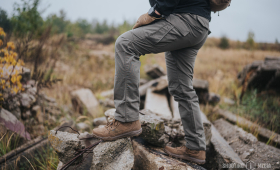This text was created as part of an commercial cooperation with Agilite. As always, we have made every effort to ensure that the following article provides reliable information. It presents the author's opinion and does not close further discussion, to which we invite you in the comments.
Agilite... if, a few years ago, you had asked a person interested in tactical equipment if this name rung a bell, I suspect that the response would have been meaningful silence. The reason o behind this is two fold. For once, products with the scorpion logo are not very popular in Poland country which is partly the result of the distribution model, which was focused on other parts of the world. Secondly, is also due to the fact that in our circles equipment from Israel (except for individual enthusiasts who can distinguish Marom Dolphin vests from Hagor ones, based on individual elements visible in photos) is treated rather as an exotic curiosity, not a desirable component one of the top "silhouettes" of special forces operators from the USA, Poland or UK. However, when someone delves into the Middle Eastern climate, they can discover a number of interesting and unusual solutions used by IDF or MAGAV, and one of the representatives of this trend is certainly the Israeli "premium" brand, which is Agilite.
The two V-shaped straps are characteristic of the Agilite plate carriers. (photo by Paweł Ciecielowski, WMASG)
I can assume that the contact most people had with this manufacturer was mainly through to their helmet covers, which used to be a cheaper alternative to top American solutions. Their distinctive design resulted in numerous copies being made Chinese copycats, which makes it possible to buy designs based on old models, even in Polish stores. The newer version of the cover is now more widely used, e.g. by special units from Canada, the United States, France or Israel. The second "export" product of this manufacturer is certainly their unique plate carrier. The characteristic K19 (which has already reached its third generation) vest is clearly inspired by the designs used by IDF soldiers over the years. However, this text will be about a completely different vest, which premiered a few days before its writing.
(photo: Paweł Ciecielowski, WMASG)
Agilite K-Zero is one of the most comfortable plate carriers we've come across. (photo by Paweł Ciecielowski, WMASG)
This text will not be aimed at long-term tests, but rather a description of the impressions and experiences of a person who has already worn several other vests and is more or less able to assess their strengths and weaknesses. So let's move on to the main protagonist of this review, namely the Agilite K-Zero, the latest product of this manufacturer. Agilite assures that the experience and opinions of many special forces soldiers, both Israeli and American, were used in the creation of this design. So what is the K-Zero? Is it just a slimmed down and a bit more "modular" version of its heavier brother, the K-19, popular among Israeli SOF.
(photo: Paweł Ciecielowski, WMASG)
The K-Zero seems to meet the expectations of the modern battlefield and aspires to meet the requirements of special forces units. The Agilite company focused on solutions proven by other manufacturers, namely vast modularity, allowing the vest to be adapted to various combat tasks that its users face. Of course, this plate carrier, due to its debatable design, will not necessarily satisfy everyone. And to be honest, at first glance I had a similar opinion, assessing it as a structurally overcomplicated novelty, which may not fully meet the expectation of its users. Over time, however, I came to the conclusion that this was an unfair assumption. Additionally, the “Israeliness” of this project is very prominent and expressed as a series of design references to the vests used years ago by the IDF. However, this is not a complaint. On the contrary, it helps to emphasize its "feel".
The Agilite K-Zero Plate Carrier was designed for fighting in confined spaces after listening to feedback from Israeli and American Special Forces users. (photo by Paweł Ciecielowski, WMASG)
Plate bags - front and back
(photo: Paweł Ciecielowski, WMASG)
The front and back bags of panels was made in a "3D" cut, i.e. it is not a standard, double layer of material sewn together, but with a structure consisting of three separate elements. Therefore, we have a front panel made of cordura, which is the "front" of the bag and has MOLLE/PALS webbing, Velcro and straps sewn onto it. The back of the ballistic plate, from the side of the user's body, is separated by a patch of thick mesh, which in the case of the back bag also goes on the inside of the vest's shoulder straps.
(photo: Paweł Ciecielowski, WMASG)
(photo: Paweł Ciecielowski, WMASG)
(photo: Paweł Ciecielowski, WMASG)
Finally, we have a separate piece of fabric that runs along the edge of the bag, which links the front layer and the inner mesh. The front plate bag is trimmed in the upper part with a layer of laser-cut Velcro in a camouflage matching the rest of the vest. The manufacturer has also provided two horizontal MOLLE/PALS grids (4 rows each) and two double "posts", enabling attachment of repair buckles or a front panel equipped with g-hook buckles. Just below it, there is a large, soft, Velcro patch made in camouflage, which is to be used to fasten the front of a detachable panel. There is also the manufacturer's label and characteristic for this design, V-shaped technical straps, which are the endings of shoulder straps. According to the manufacturer, they are designed to better distribute the weight of the vest.
The Agilite K-Zero is designed to naturally adapt to the user's anatomy. (photo by Paweł Ciecielowski, WMASG)
On the side of the front of the plate bag there are double-sided, three management elements sewn to facilitate the organization of e.g. radio cables or hydration bladder tubes. Interestingly, due to the fact that the manufacturer has provided the option of inserting a repair version of the ROC buckles into the cummerbund, the front plate bag has additional tabs intended for this purpose. On the inside of the front plate bag, a large manufacturer's logo and a measure is sewn in its central point to help adjust the length of the shoulder straps.
(photo: Paweł Ciecielowski, WMASG)
The back plate bag is slightly different from the front one as its surface has been trimmed with both MOLLE/PALS grids (which in some cases are covered with additional Velcro) and laser-cut laminate. Surprisingly, the rear plate bag has s cross-shaped Velcro sewn on as this is the solution needed to connect the plate carrier with this manufacturer's backpack.
(photo: Paweł Ciecielowski, WMASG)
(photo: Paweł Ciecielowski, WMASG)
(photo: Paweł Ciecielowski, WMASG)
Similarly to the front plate bag, the back one has V-shaped technical tapes going up to the shoulder straps and management elements on both sides of the material going along the edges of the plate bag. However, unlike the front, there is a permanently sewn, detachable flap at the back, under which a cummerbund mounted with Velcro (e.g. from manufacturers such as Ferro Concepts, Direct Action, GTG, etc.) can be attached. The basic solution proposed by the manufacturer is the cummerbund included in the set, mounted on loops present on both sides the the back plate bag, using set of repair metal buckles with the manufacturer's logo.
(photo: Paweł Ciecielowski, WMASG)
(photo: Paweł Ciecielowski, WMASG)
The shoulder straps
(photo: Paweł Ciecielowski, WMASG)
In this vest, the user's height adjustment system is based on a double solution. The firstly part consists if shorter technical straps (sewn in and drawn out independently, from the front and back plate bag), which are additionally lined with Velcro tapes at the top and bottom. The second one consists of a permanently sewn-in element that is a hybrid of comfortpads, a "ladder" three-stage length adjustment and a tape connecting the front and back plate bag, which is adjustable, among other things, by properly securing the previously mentioned technical straps.
The Agilite K-Zero provides a wide range of adjustment options for the user's height. (photo by Paweł Ciecielowski, WMASG)
It sounds complicated and actually takes a while to get the hang of how this system works. Due to the fact that the shoulder comfort pads and the tape cover are sewn to each other permanently (the adjustment of the straps extends from the back plate bag), the manufacturer has provided for the possibility of using comfortpad slots to arrange electronics cables or other "tubes" going from back to front (or vice versa). This is possible due to the fact that the comfortpads have four cuts on each side, which can be used for the very purpose of cable management. As a side note, it should be mentioned that the adjustment of the vest is quite precise and has a large range, so most users should be able to adjust it to their size.
(photo: Paweł Ciecielowski, WMASG)
(photo: Paweł Ciecielowski, WMASG)
(photo: Paweł Ciecielowski, WMASG)
(photo: Paweł Ciecielowski, WMASG)
The cummerbund
The very low profile cummerbund can be replaced if needed. (photo by Paweł Ciecielowski, WMASG)
The "belt" around the torso, which we technically call a cummerbund is, in my opinion, the most controversial element of this vest. This is not even due to the fact that it is fastened to the back plate bag with metal buckles with a notch. Also, not because its adjustment is done by tightening the straps, which does not always work as it should, because the adjuster likes to get jammed when too much tension is applied, and the solution itself resembles older designs.
(photo: Paweł Ciecielowski, WMASG)
(photo: Paweł Ciecielowski, WMASG)
The biggest drawback is the small "capacity" of the cummerbund. (photo by Paweł Ciecielowski, WMASG)
My main complaint concerns the modular space, which is, to put it mildly... modest. In fact, the manufacturer has provided one patch of two by two MOLLE/PALS rows on each side of the cummerbund, made a laser-cut laminate. While we're at this part, inside these patches a modest mechanism is "hidden" that gives this cummerbund flexibility. Something that other manufacturers hide at the end of their cummerbunds is placed almost in the middle this design. The cummerbund "moves", but it's not an amazing effect. As a side note, we should also mention the front attachment, which hides fastened tapes for attaching the ROC buckles, instead of the velcro panel. This is one of the examples of the "modularity" that I wrote about at the beginning, In this way, it can be converted into a quick-release variant, using this currently extremely popular solution.
(photo: Paweł Ciecielowski, WMASG)
(photo: Paweł Ciecielowski, WMASG)
Summary
I've been wondering for a long time how I could summarize my experience with the Agilite K-Zero and I came to the conclusion that the easiest way would be to indicate what I liked the most about this vest. I would certainly point out the comfort of wearing it. The thick mesh definitely does a its job and makes the plate carrier very pleasant to use. Particularly noteworthy is the very construction of the shoulder straps, which is designed to arrange the ballistic plates at the right height of the body. As the manufacturer has noted, the human body is not symmetrical enough to level the plates at the same height, and only a slight increase of the ballistic cover of the back in relation to the chest is anatomically correct. And that's what actually the K-Zero vest does as it sort of arranges itself in such a way. The manufacturer also emphasizes the more anatomical arrangement of the shoulder straps, which allows for more effective tightening of the silhouette while aiming in tight spaces. This is a result of listening to the comments of users of other models of Israeli special forces vests.
The Agilite K-Zero can be expanded with modules (e.g. front flap, cummerbund) made also by other manufacturers. (photo by Paweł Ciecielowski, WMASG)
One may also like the idea of a modular front panel, which is compatible with various designs based on the g-hook or fastex buckles. However, one must keep in mind that some of the front flaps may slightly protrude from the mounting surface (e.g. the tested Crye Precision panel, which due to four mounting straps does not adhere tightly to the Velcro on the vest, the flaps bulge the module resulting with empty spaces underneath it) or they will not be evenly attached onto the mounting grid.
(photo: Paweł Ciecielowski, WMASG)
The quality of Agilite's sewing and materials is spot on, everything is made perfectly, as it should be for a brand aspiring to be called a "premium" one. My biggest complaint concerns the mentioned cummerbund (although it is comfortable and in a light configuration it really works) and the fact that it is based on tightened adjustment buckles - I am not used to this solution and consider it quite old-fashioned. Nevertheless, the foreseen possibility of using cummerbunds made by other companies is commendable, as it can eliminate the problem described above. In conclusion, this is certainly a piece of equipment worth considering, especially when someone is looking for a very comfortable design from a higher shelf and would like to buy something that will certainly stand out in a crowd. Just ask yourself how many Agilite products have you seen so far?
Special thanks to Klub Strzelających Inaczej for making the "Podwórze Koguta" shooting range in Zielnów available for us!

